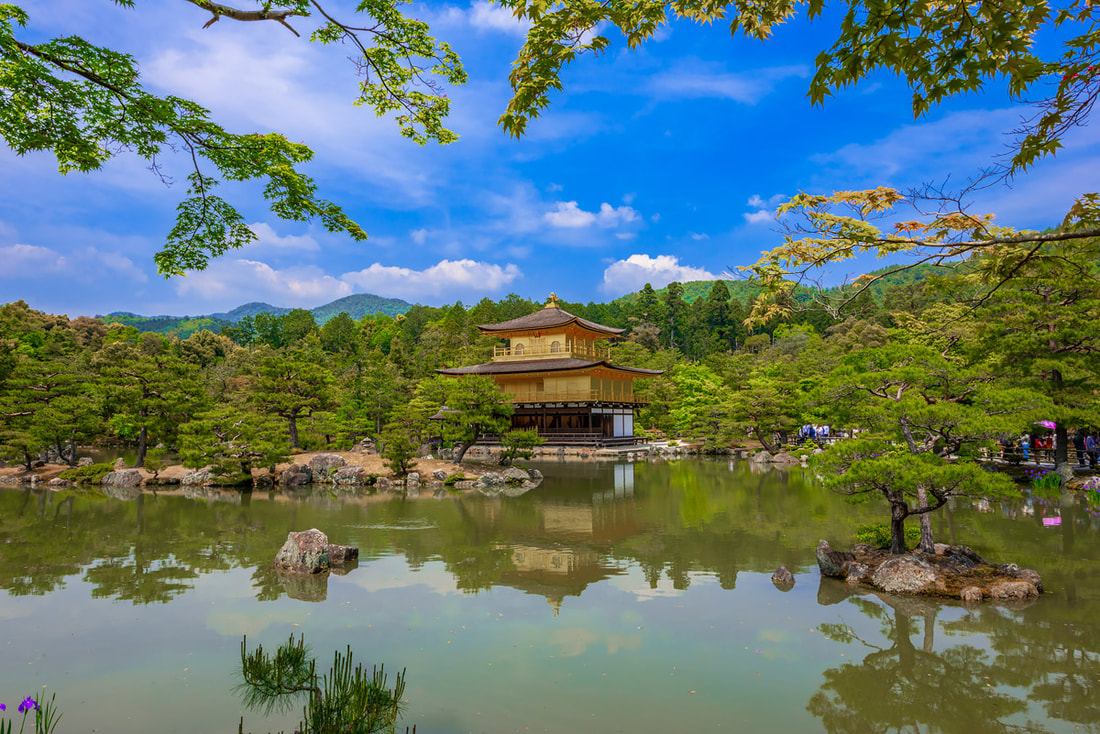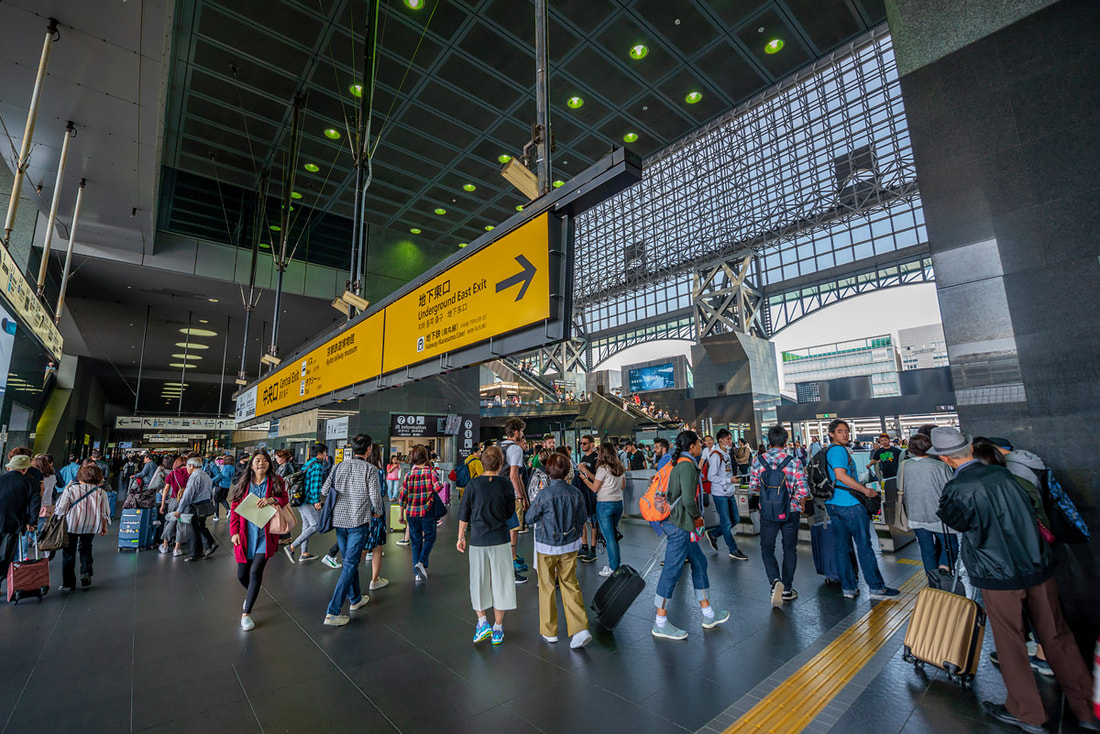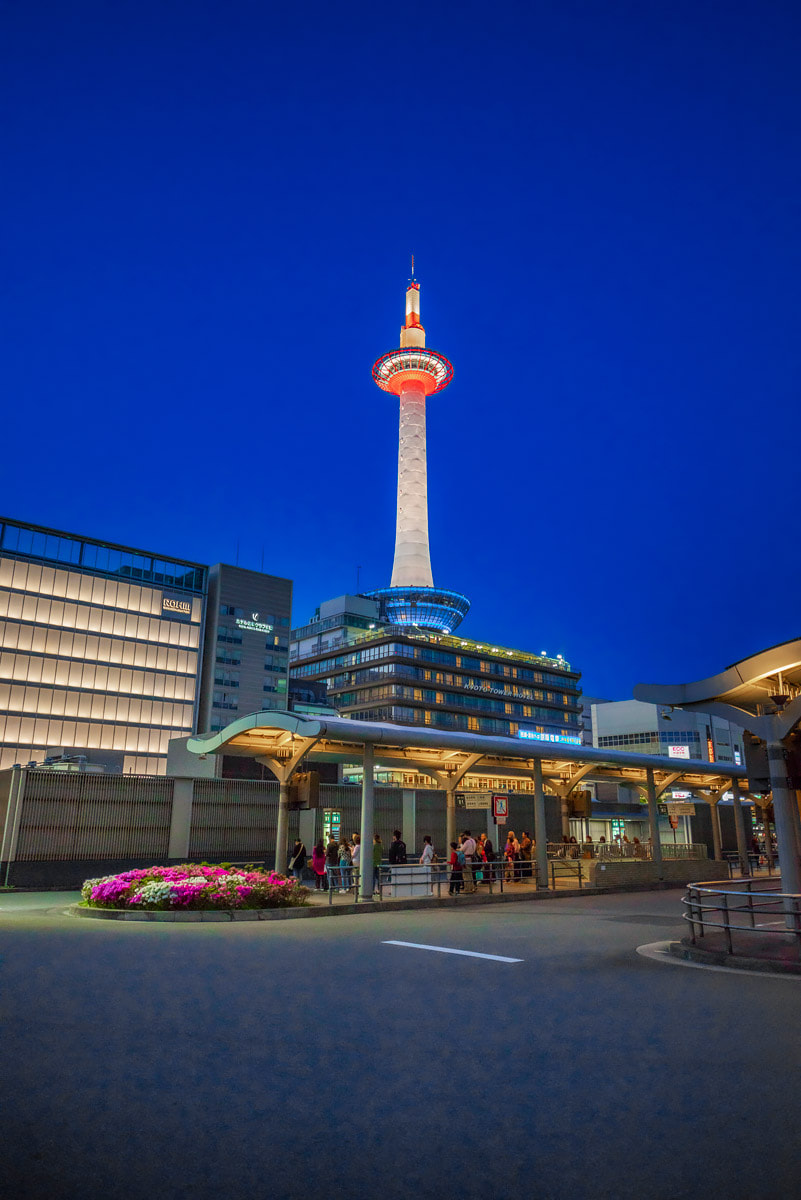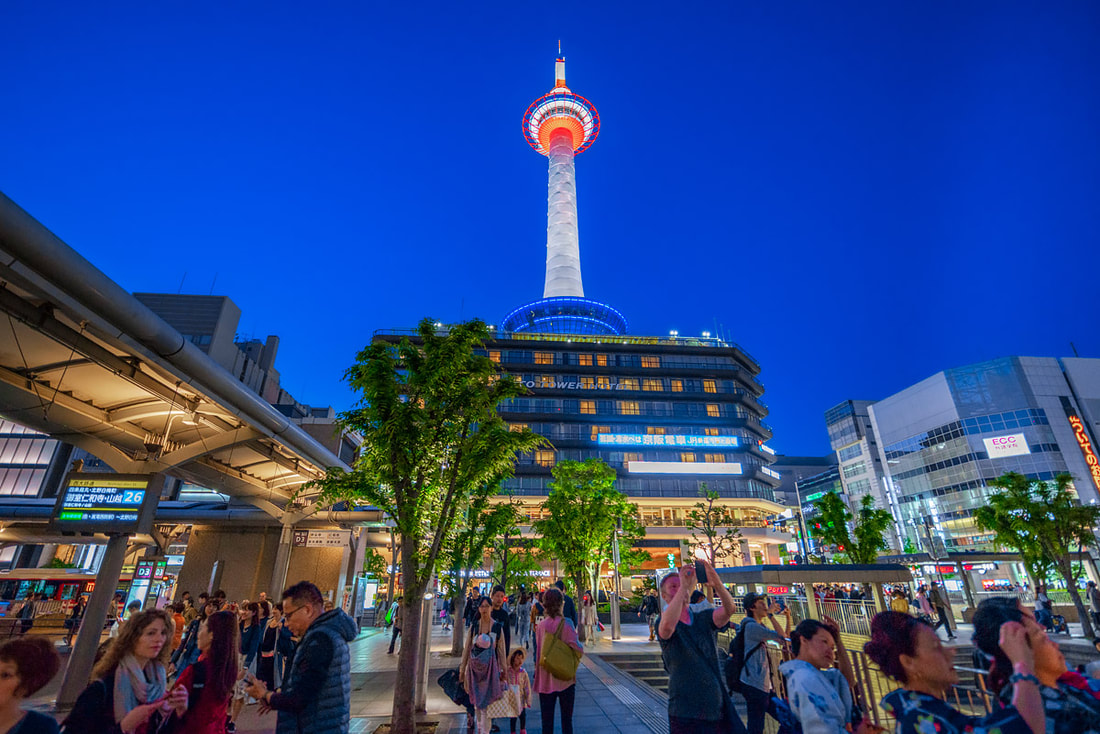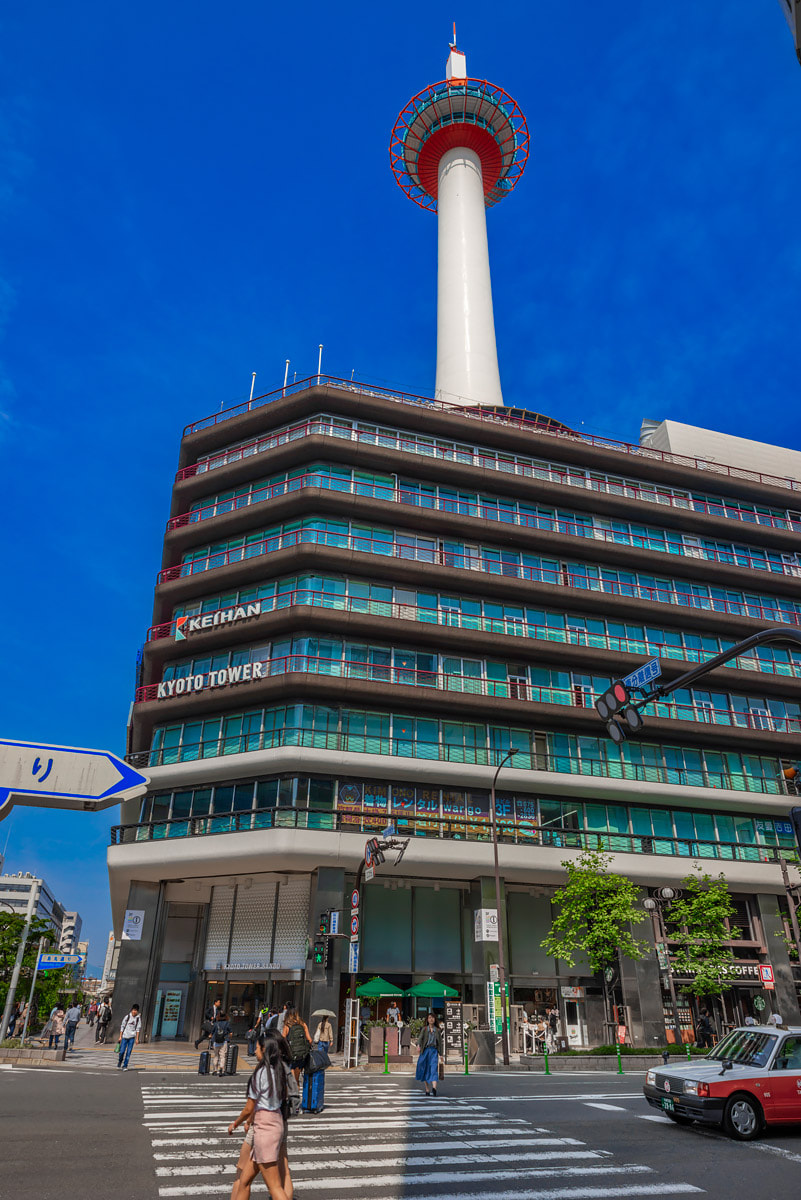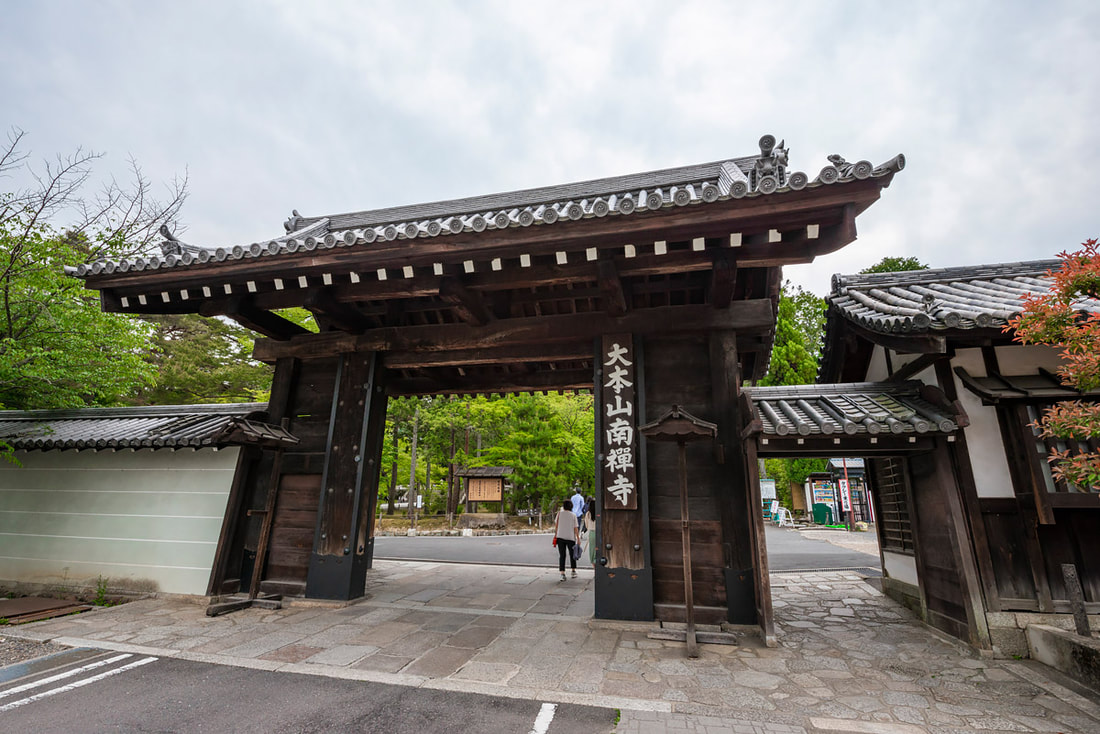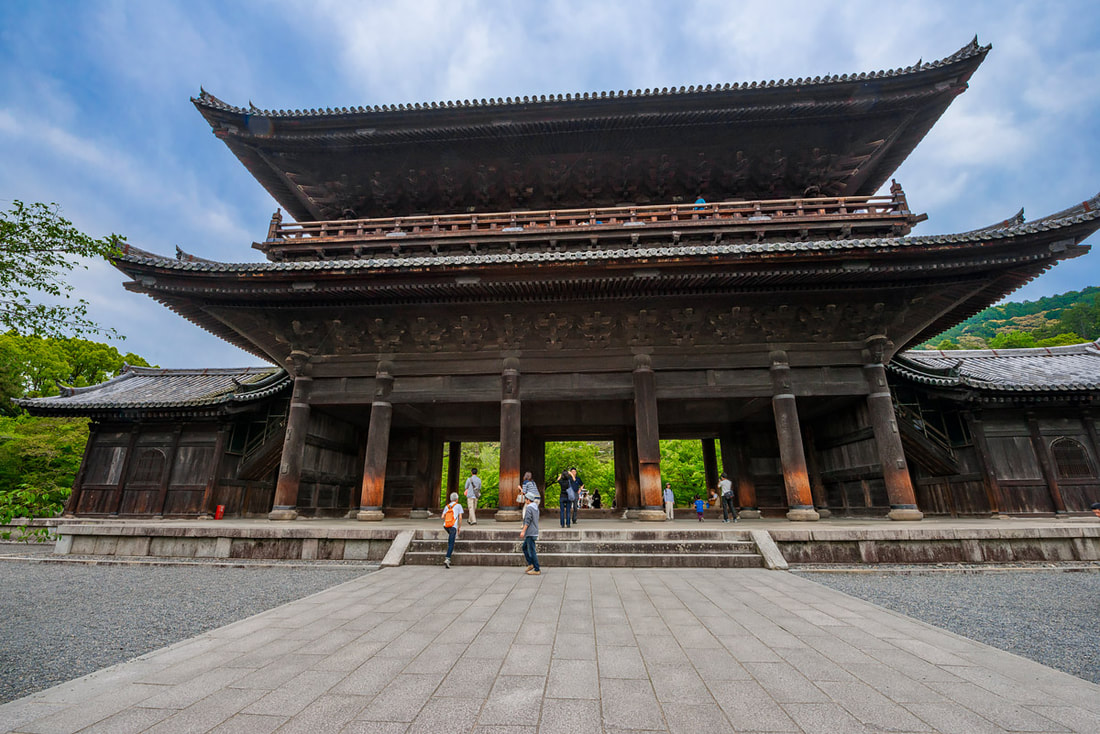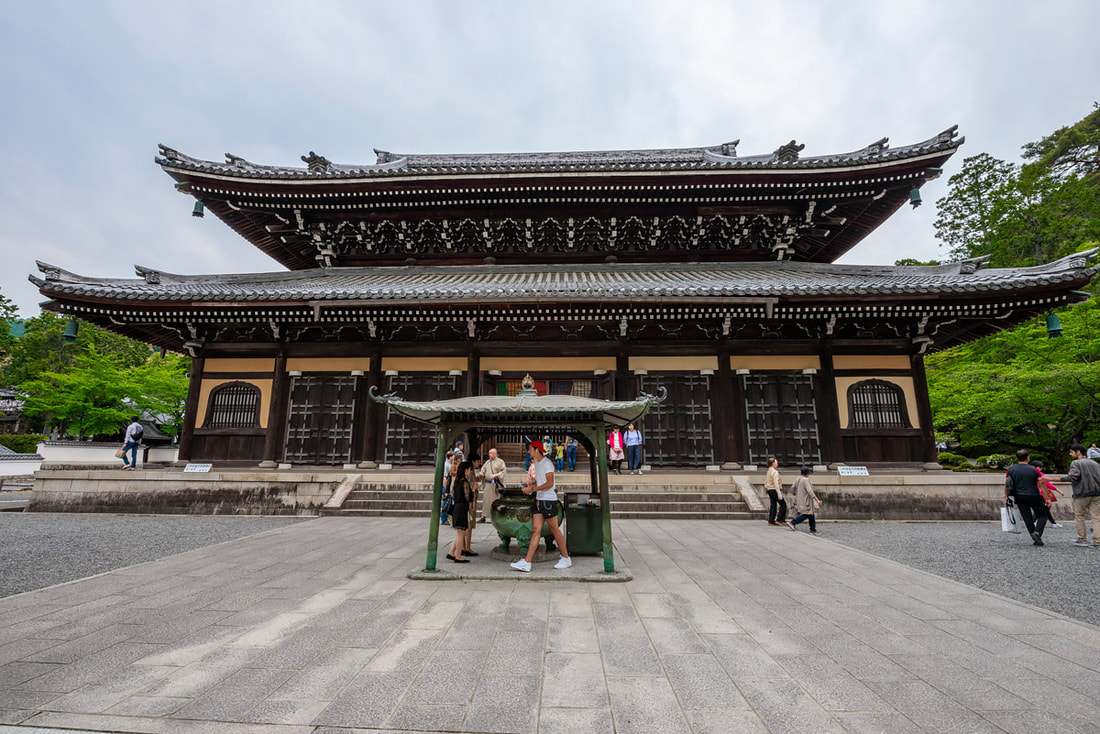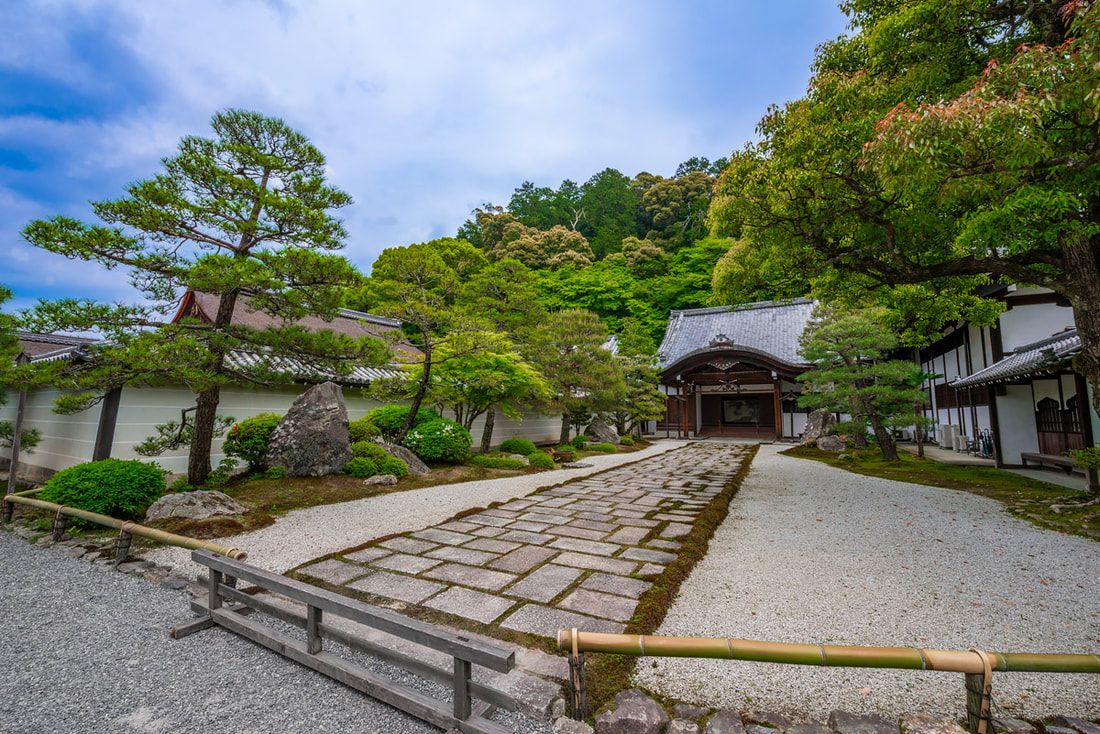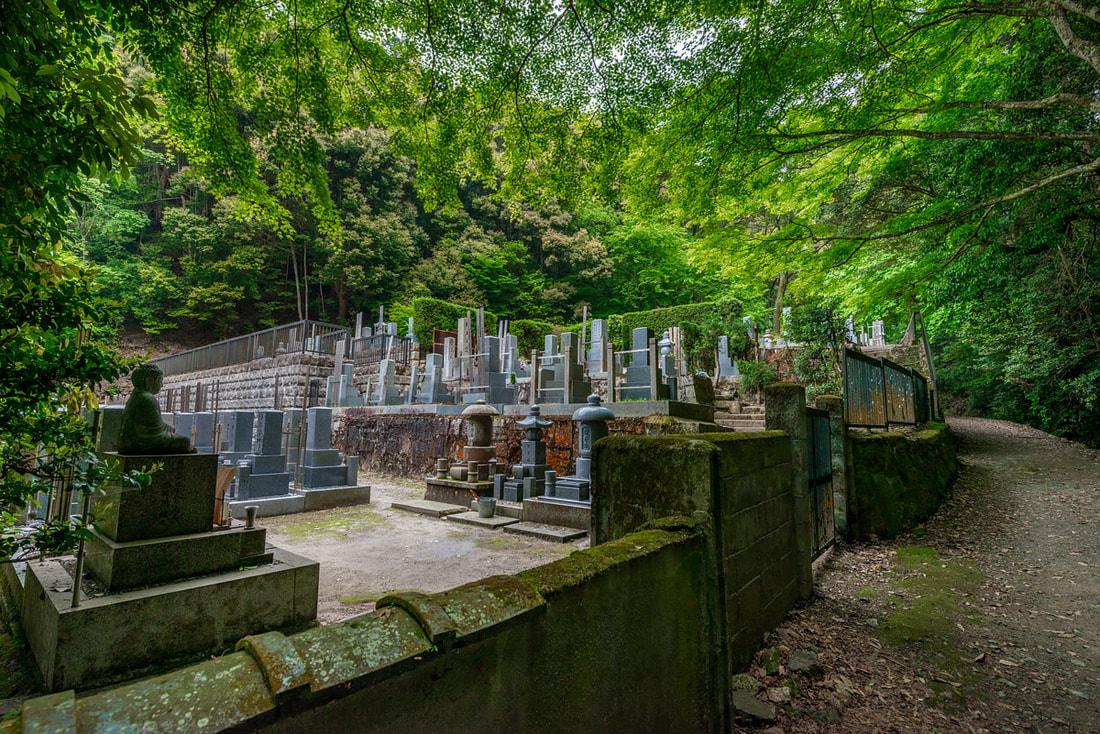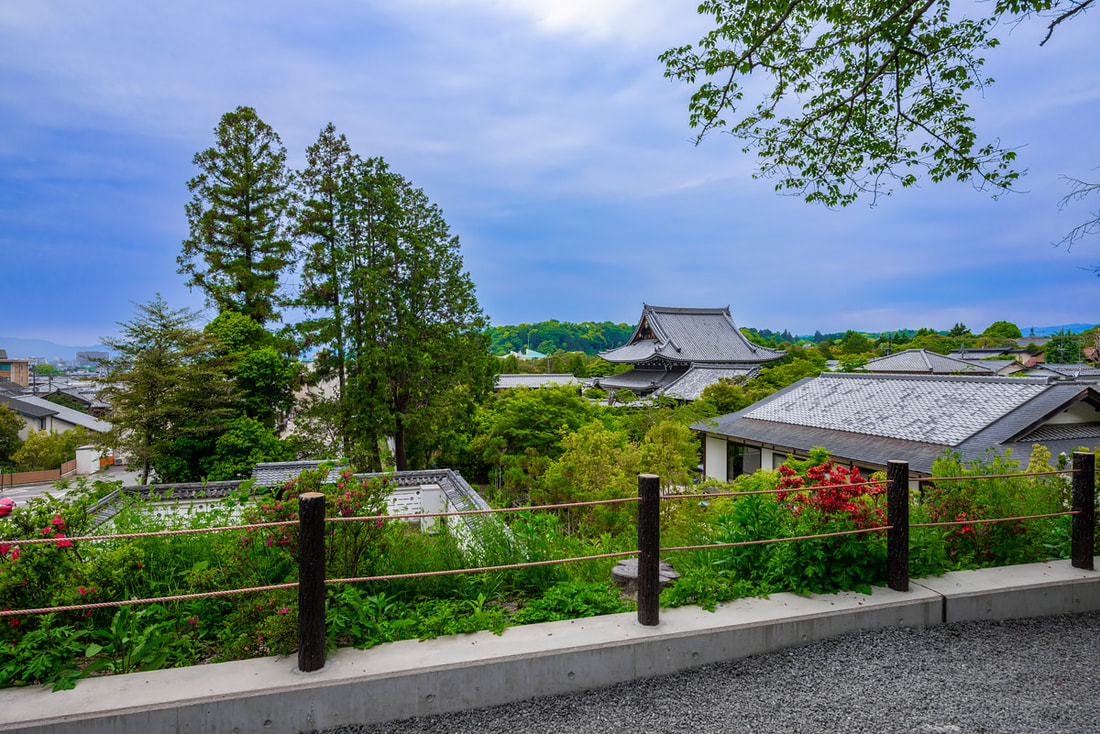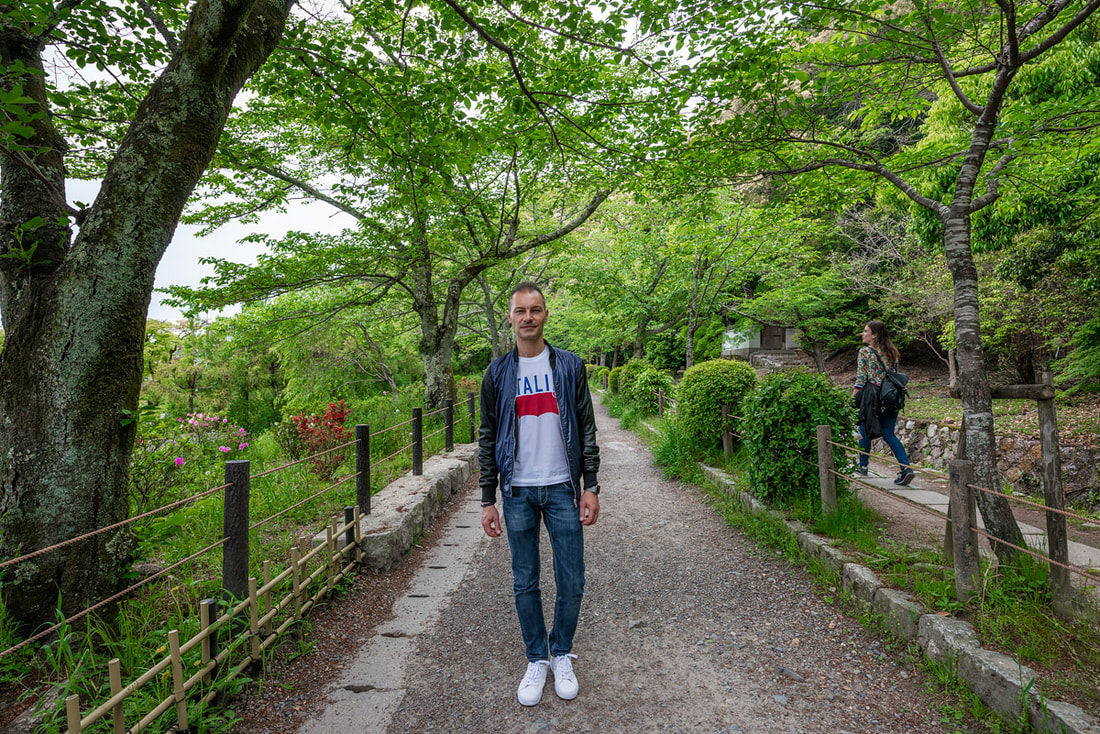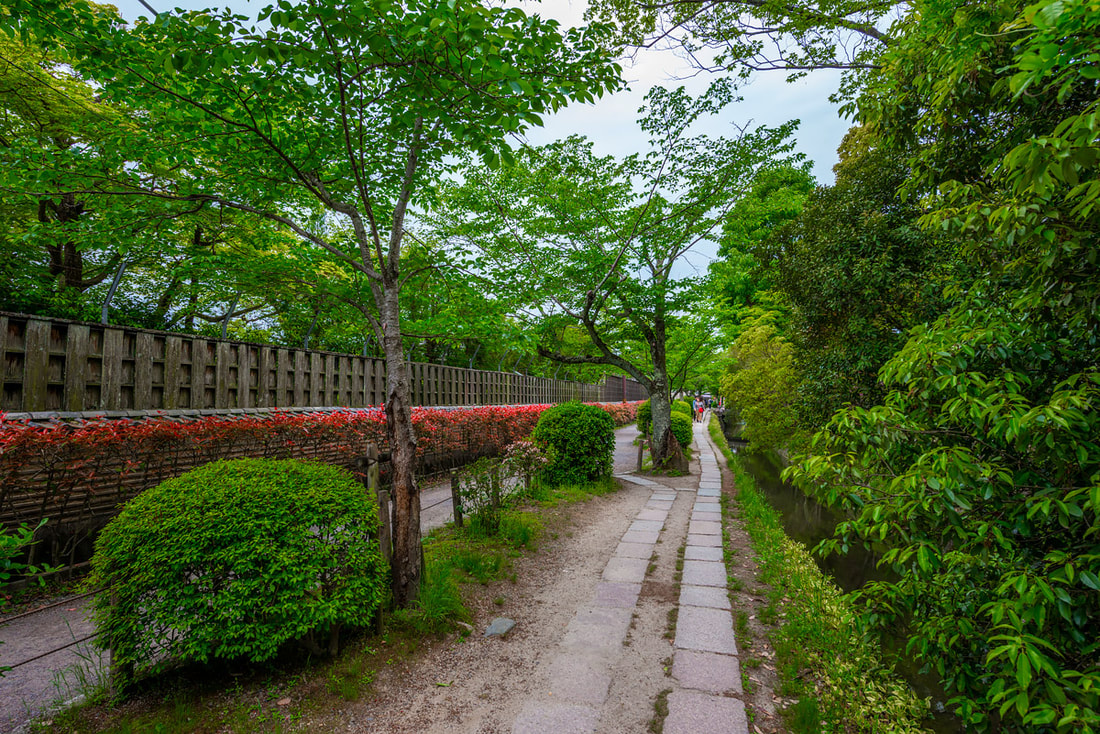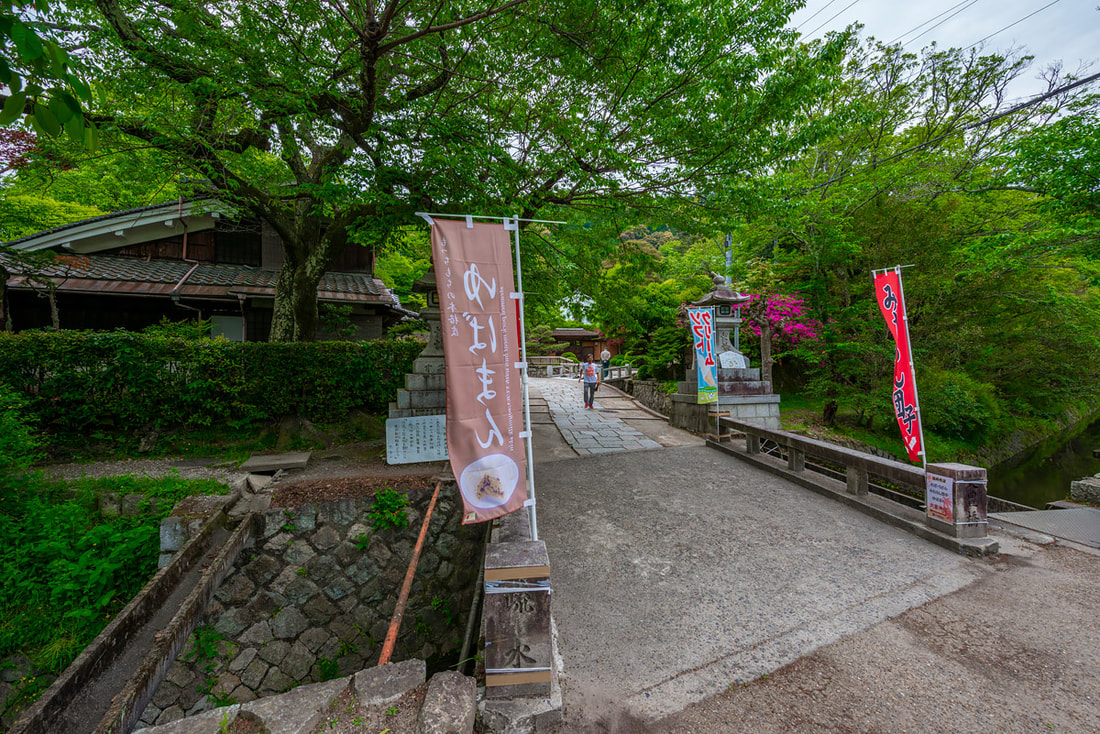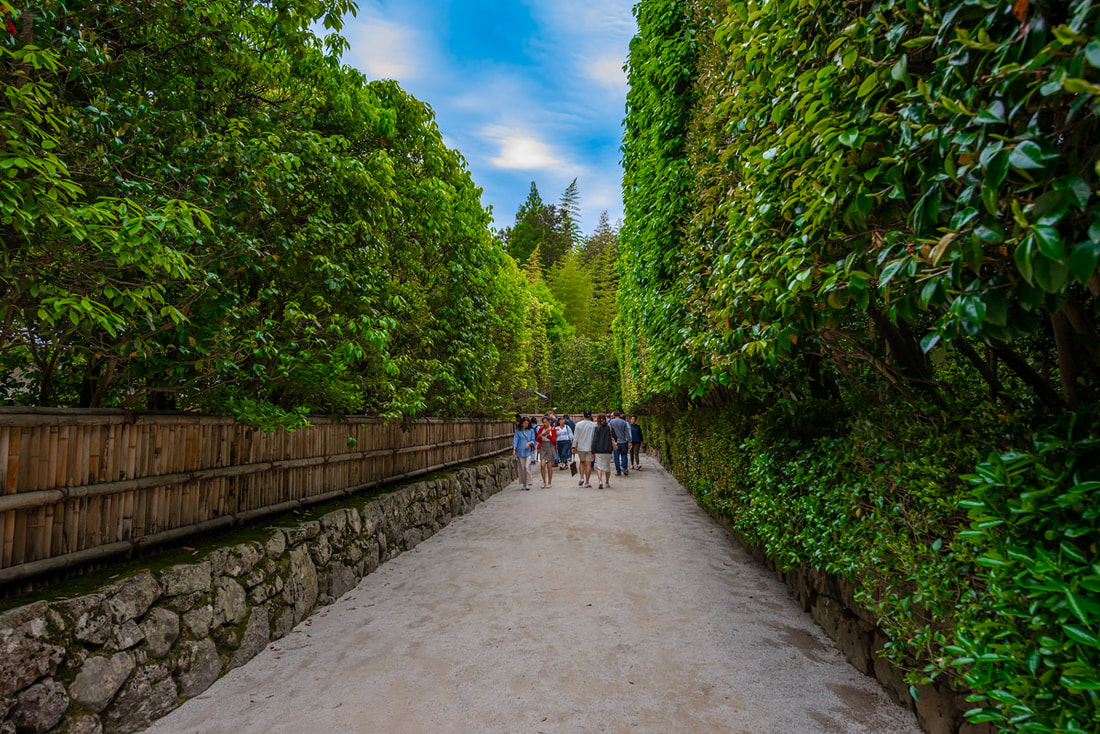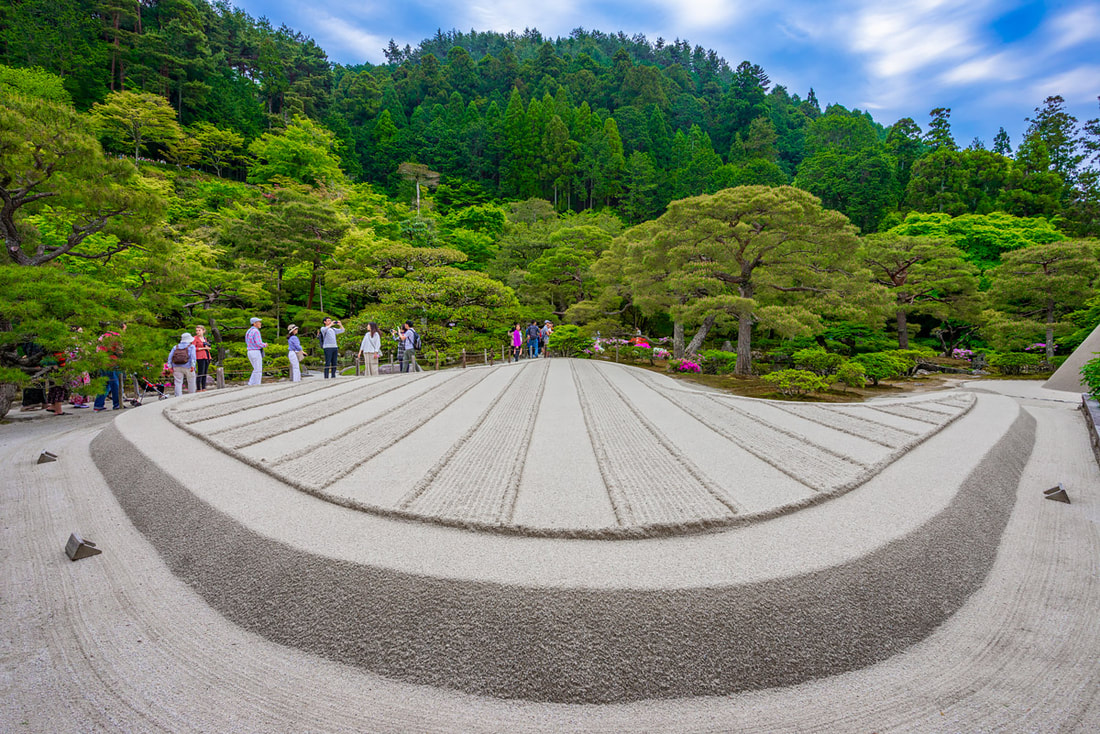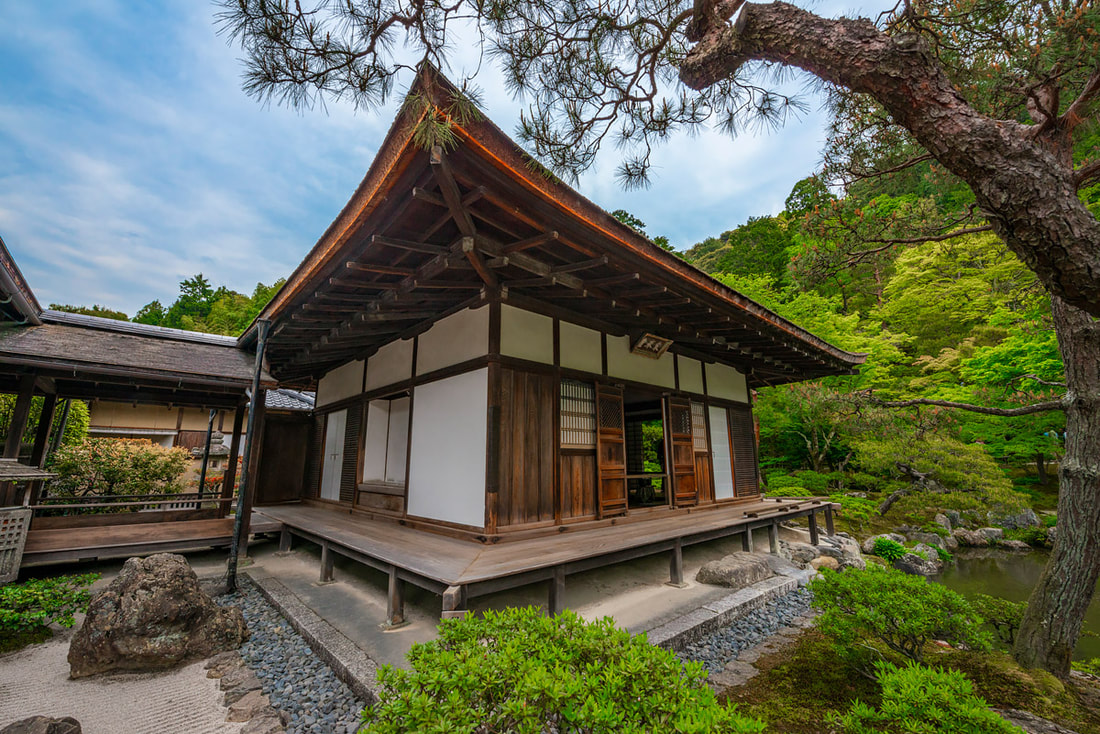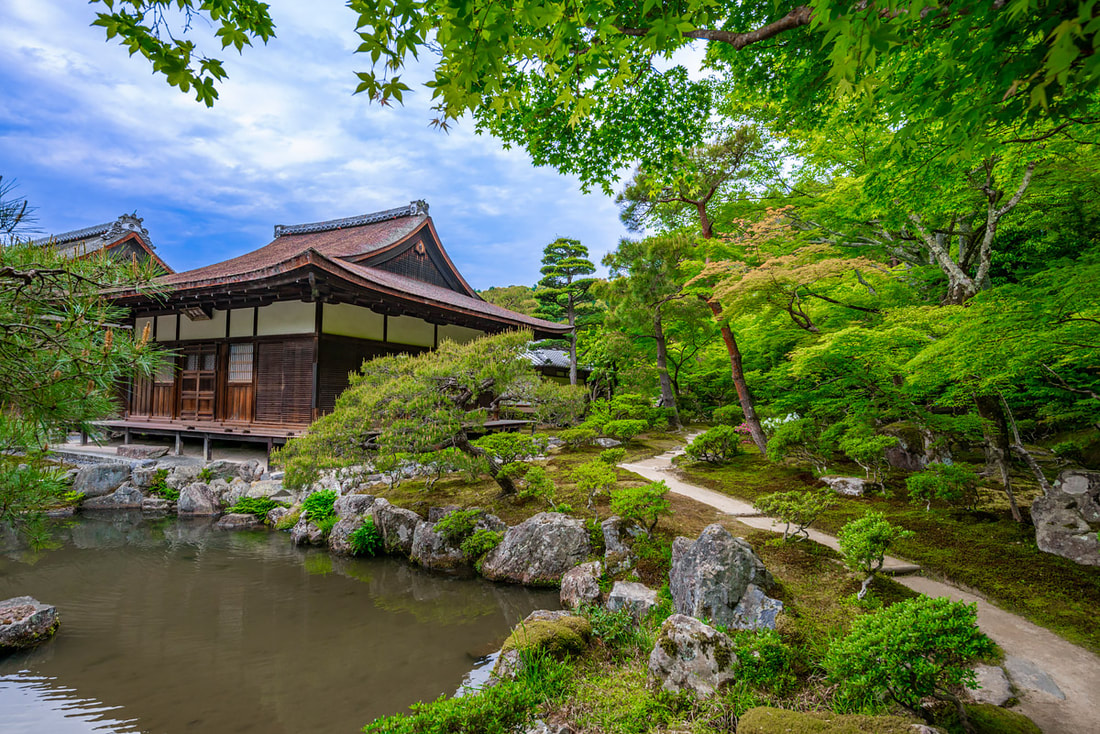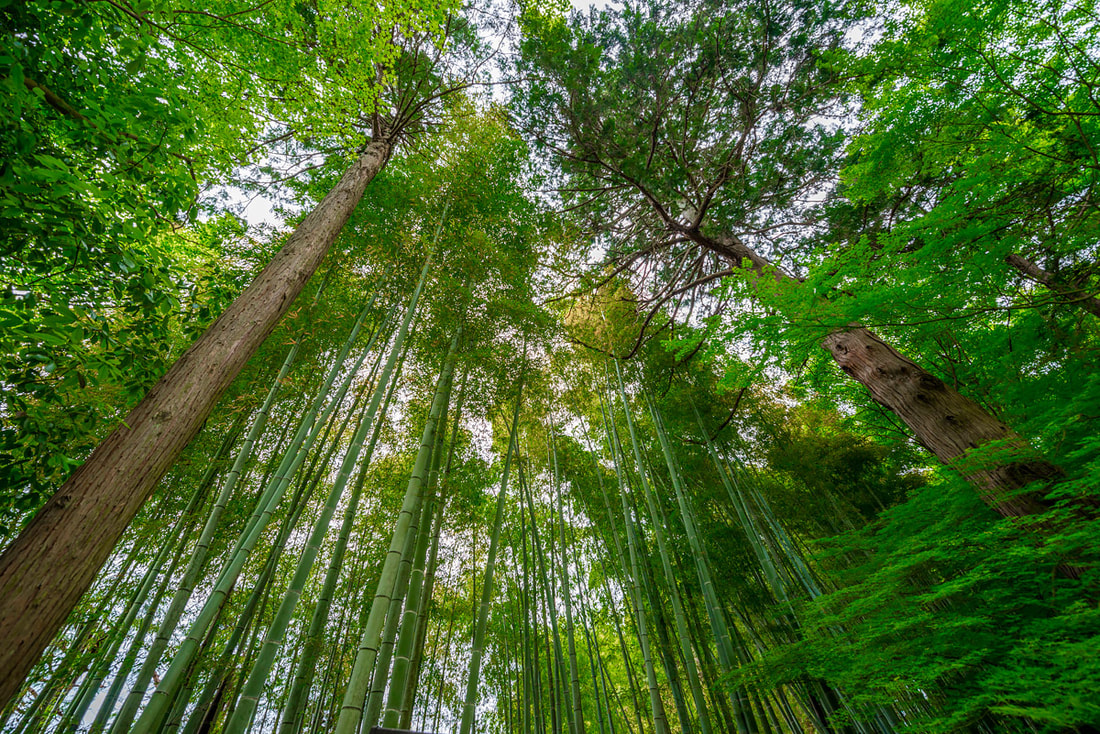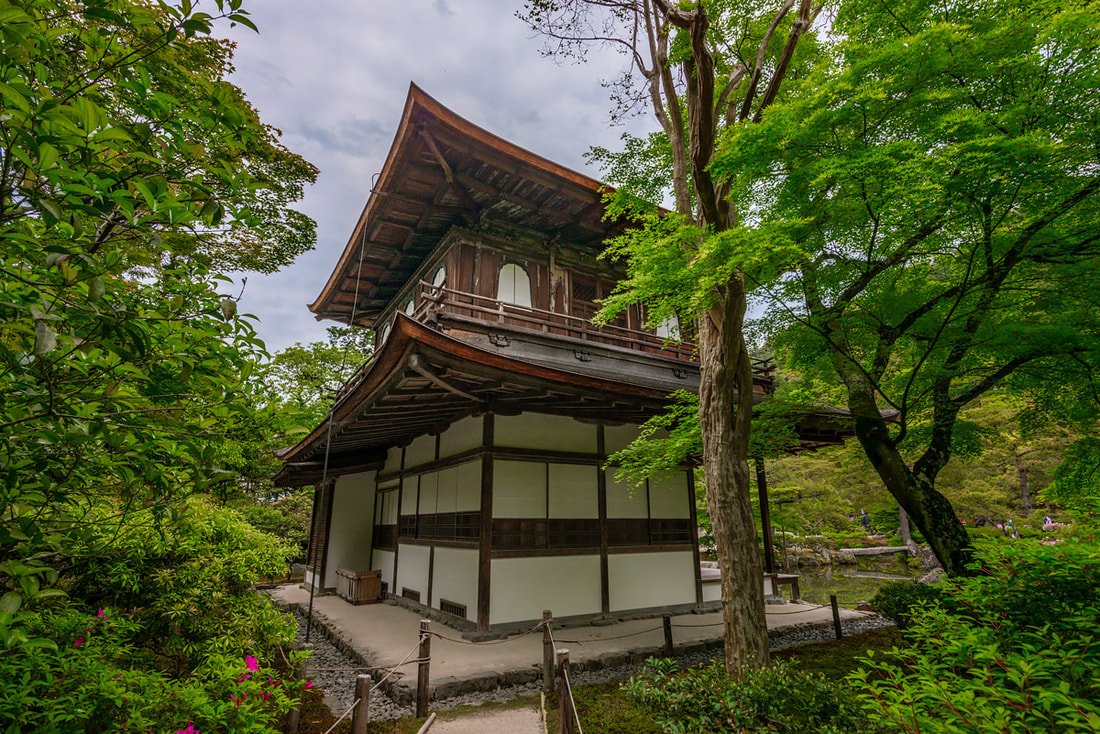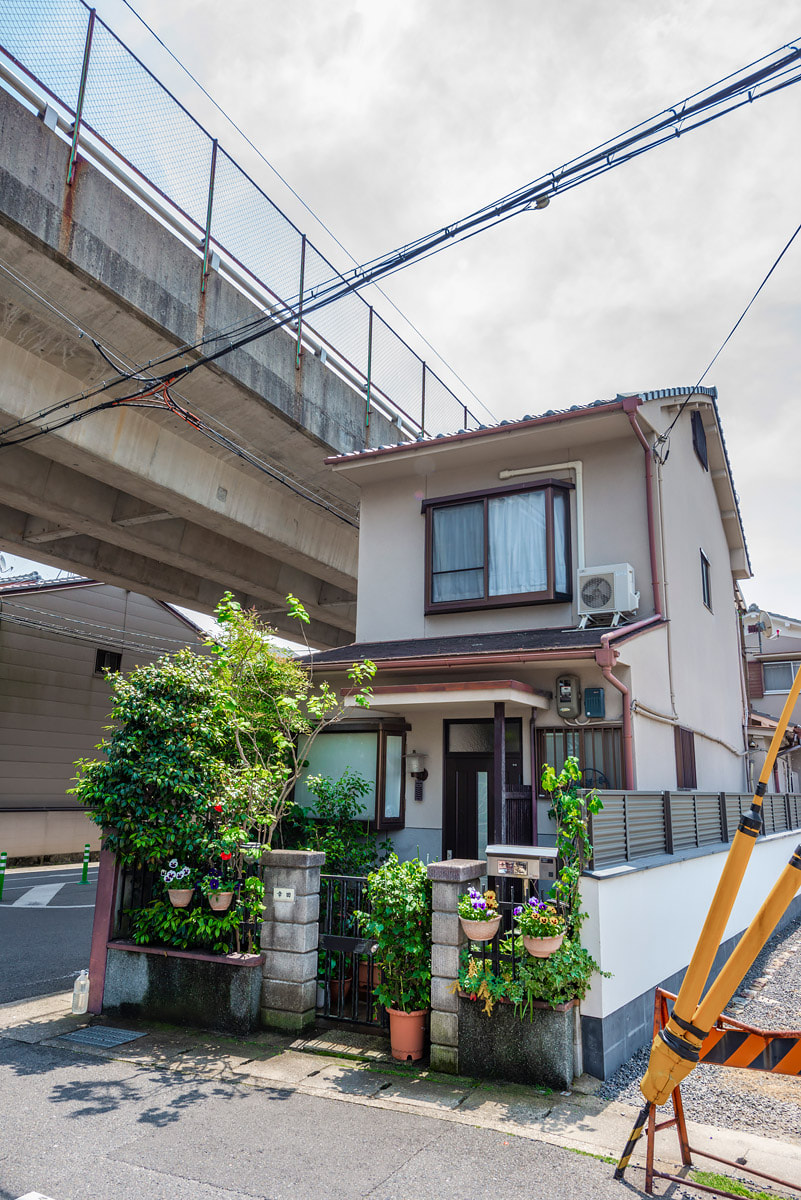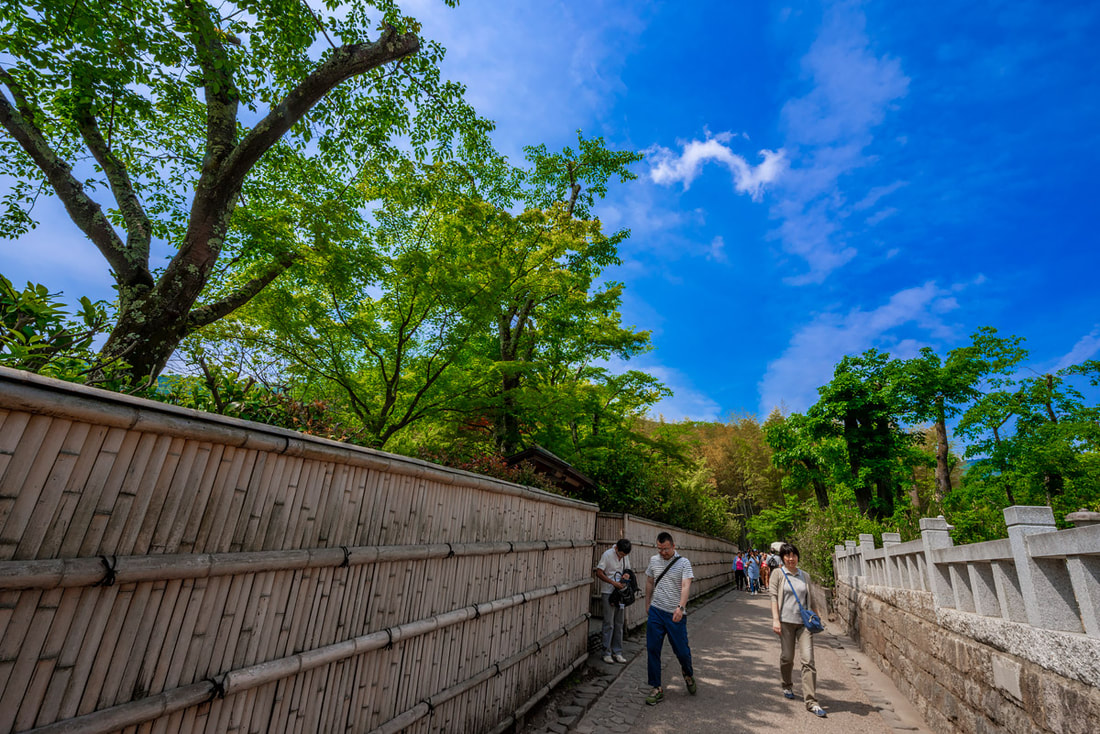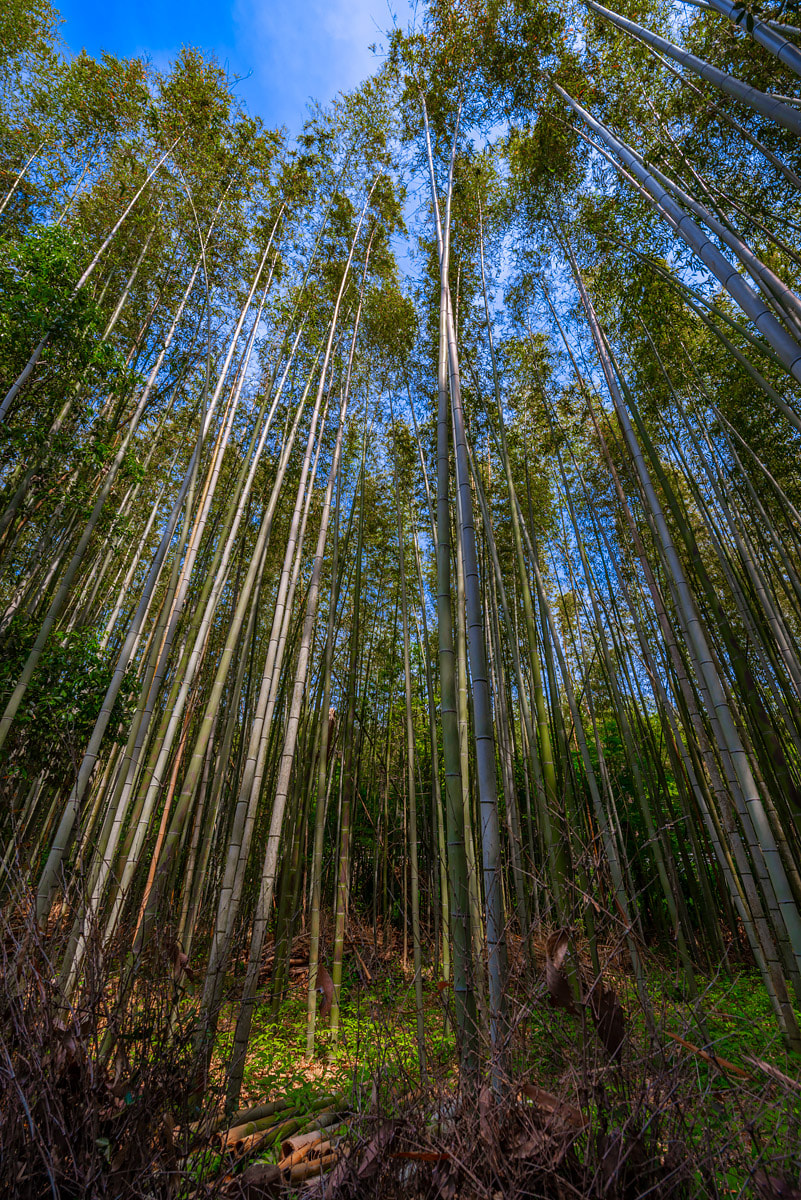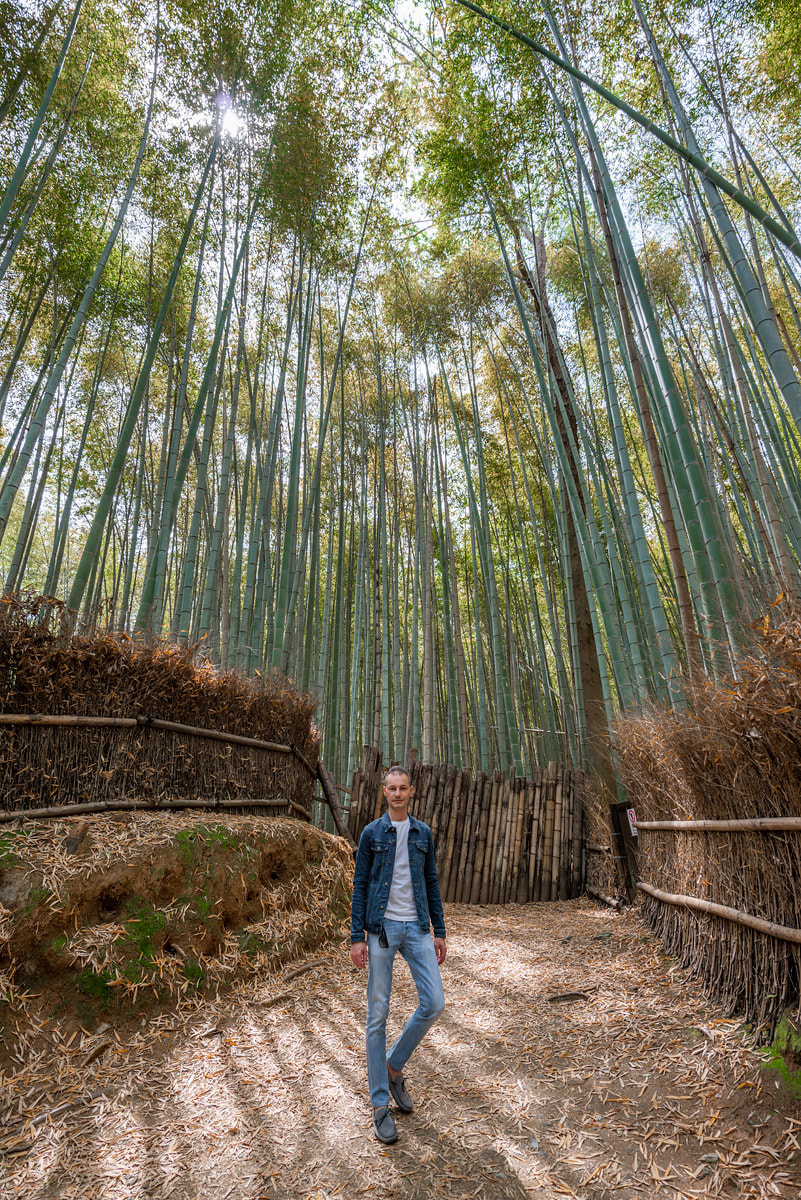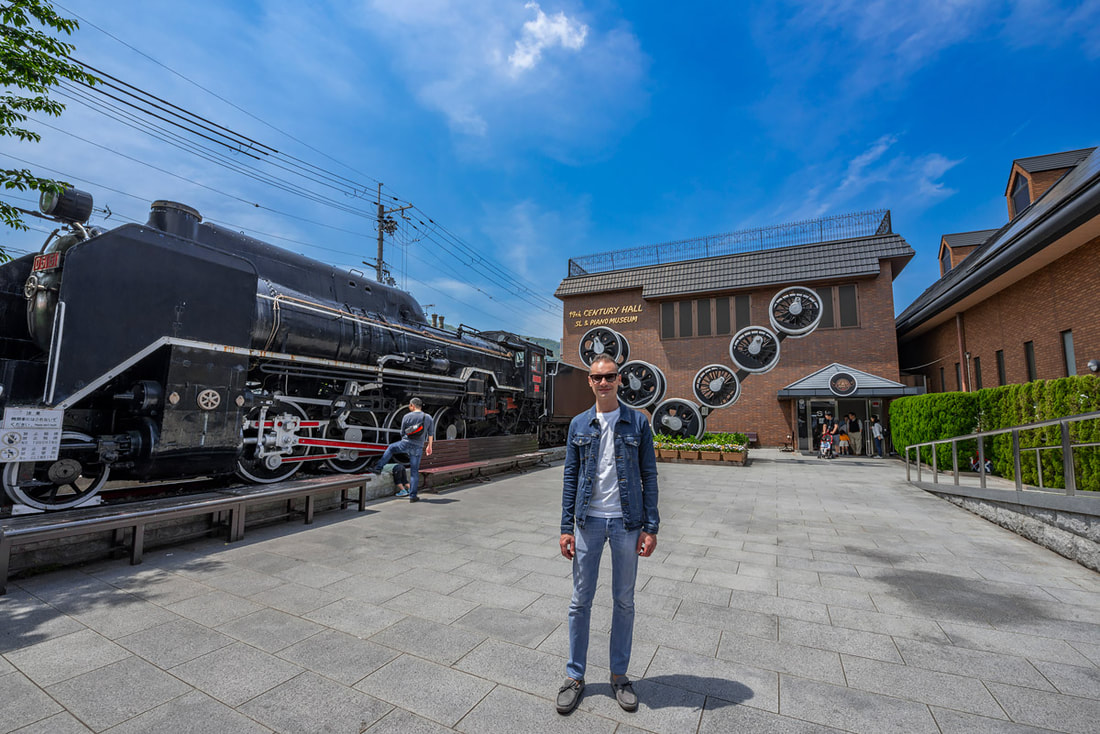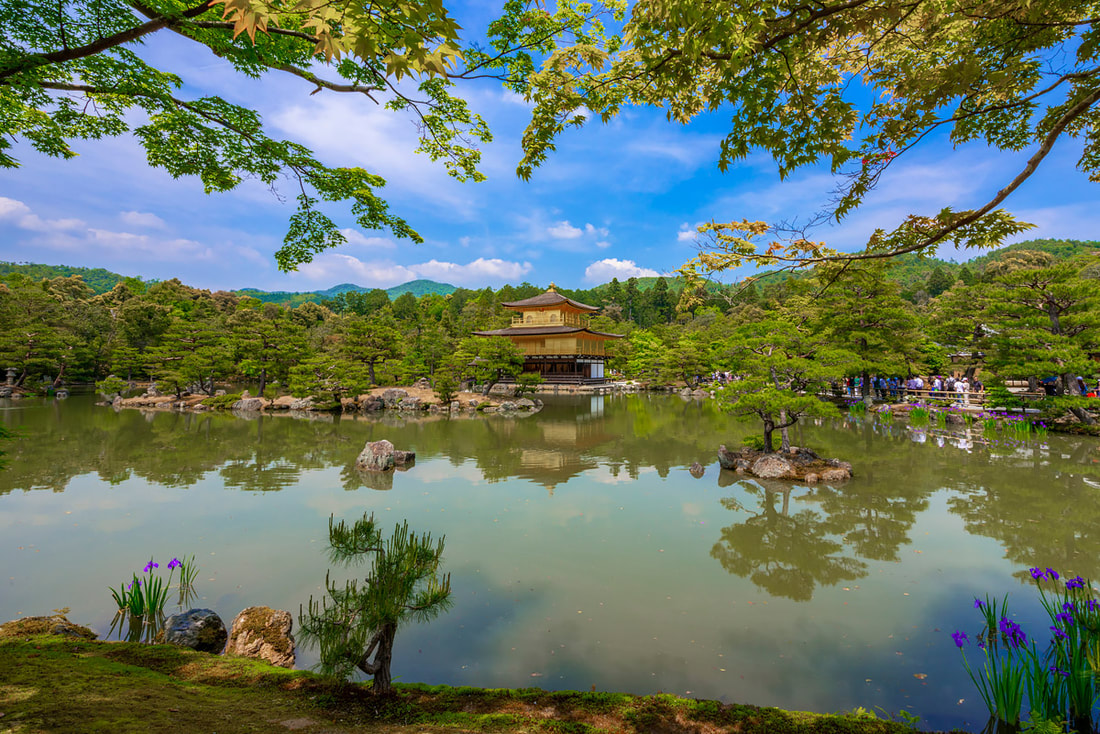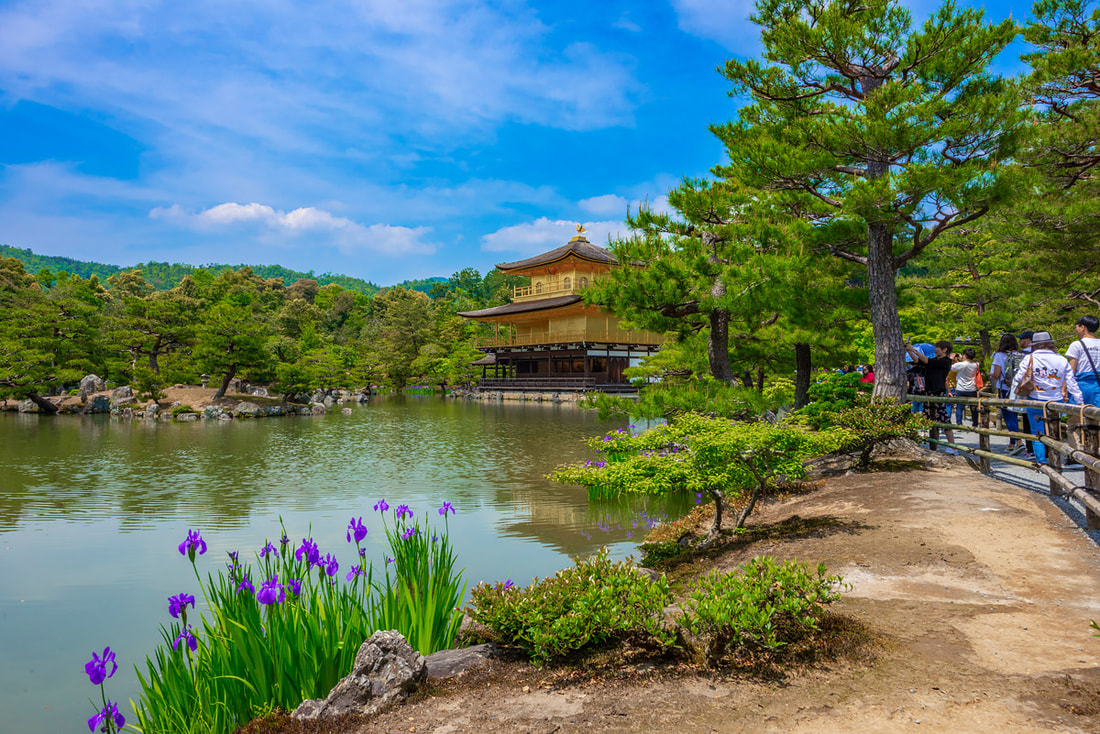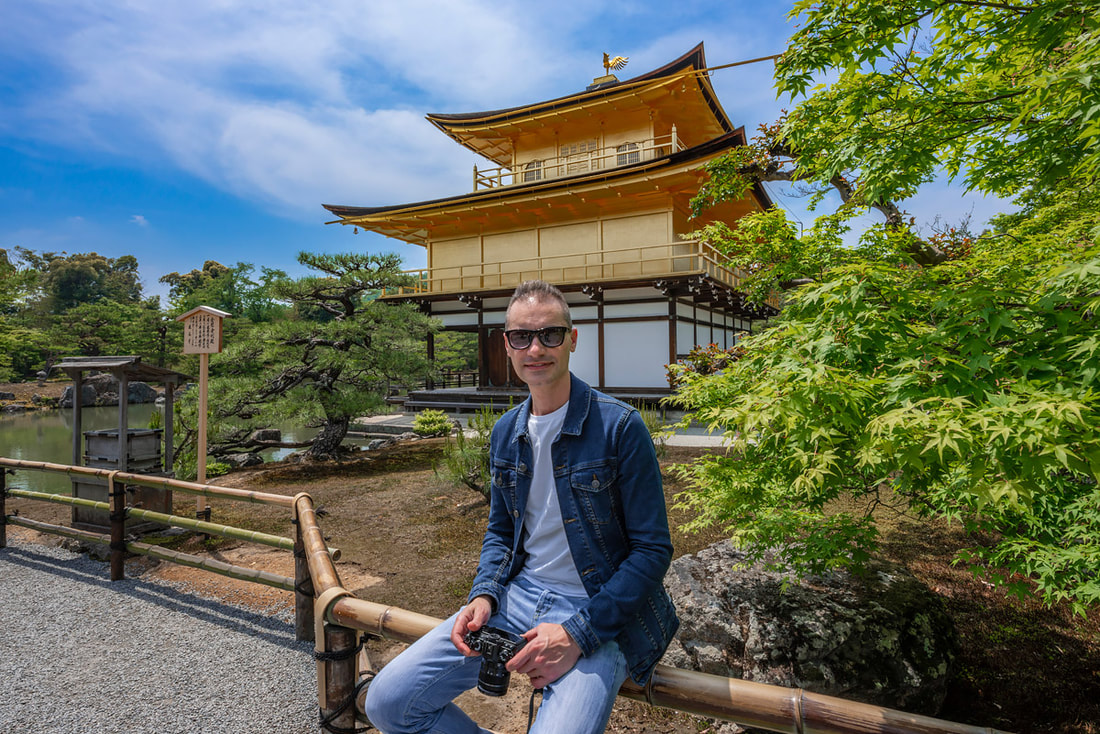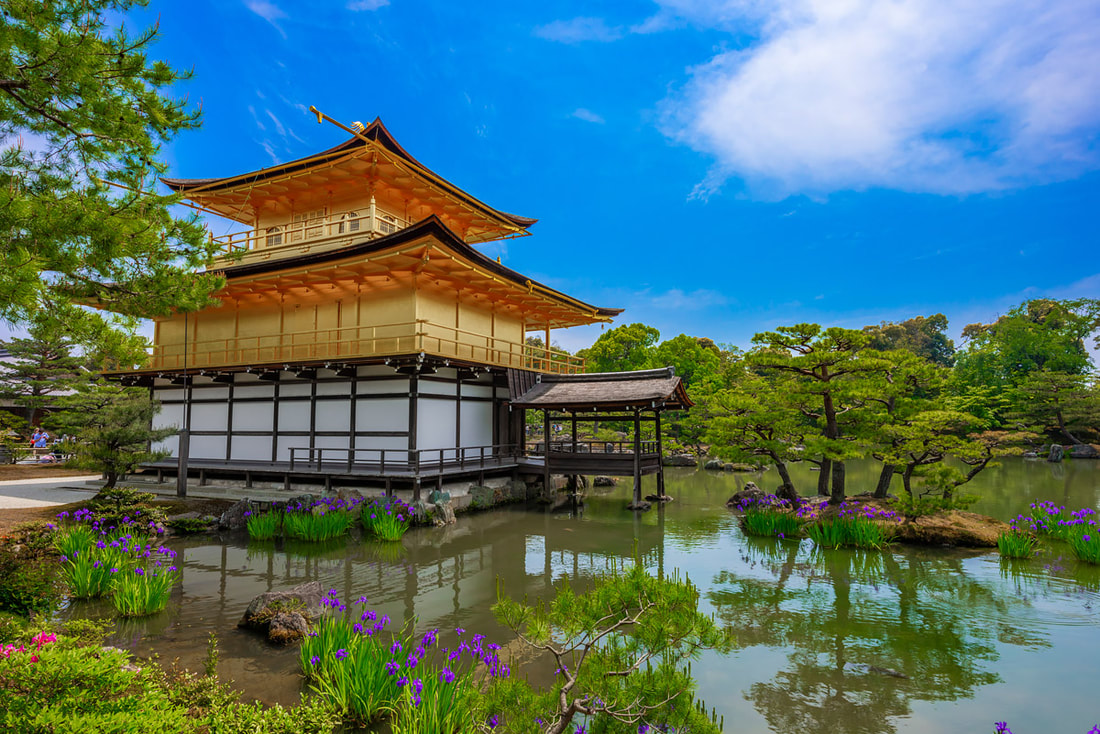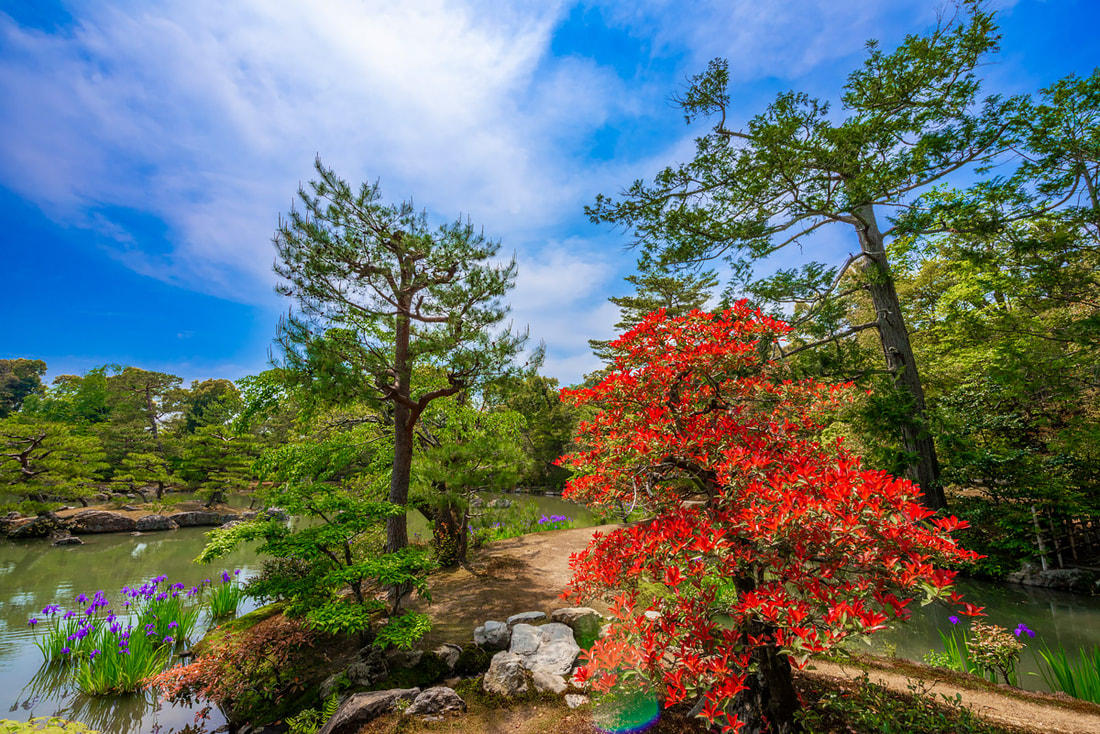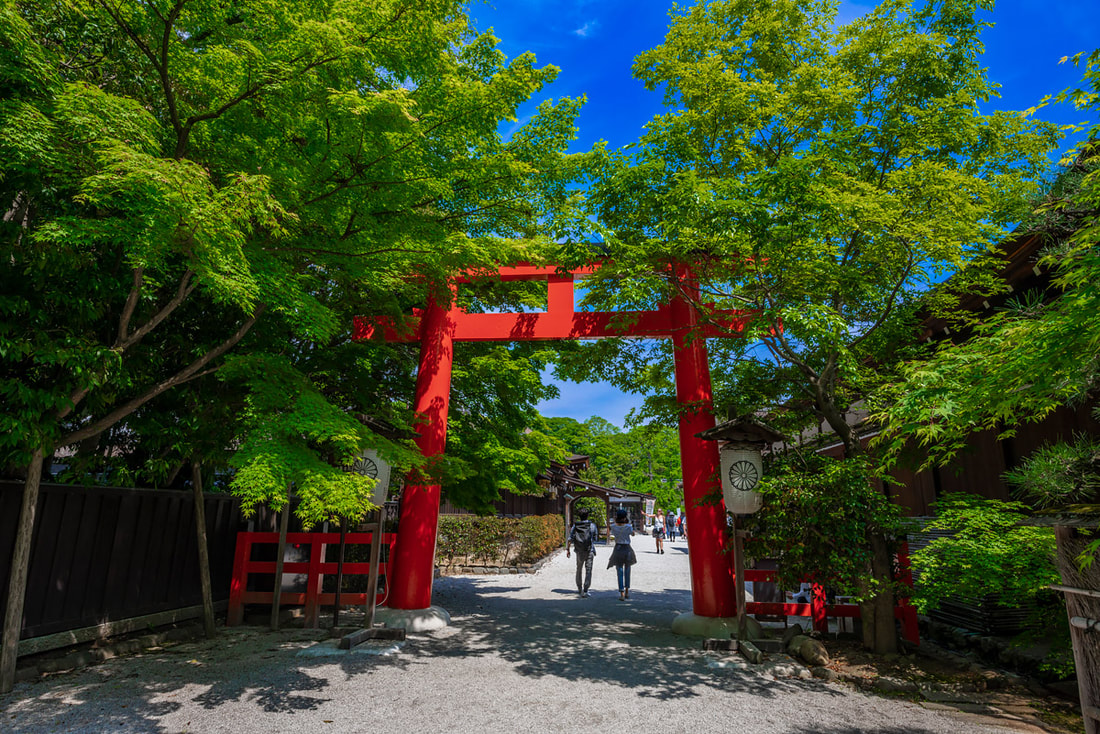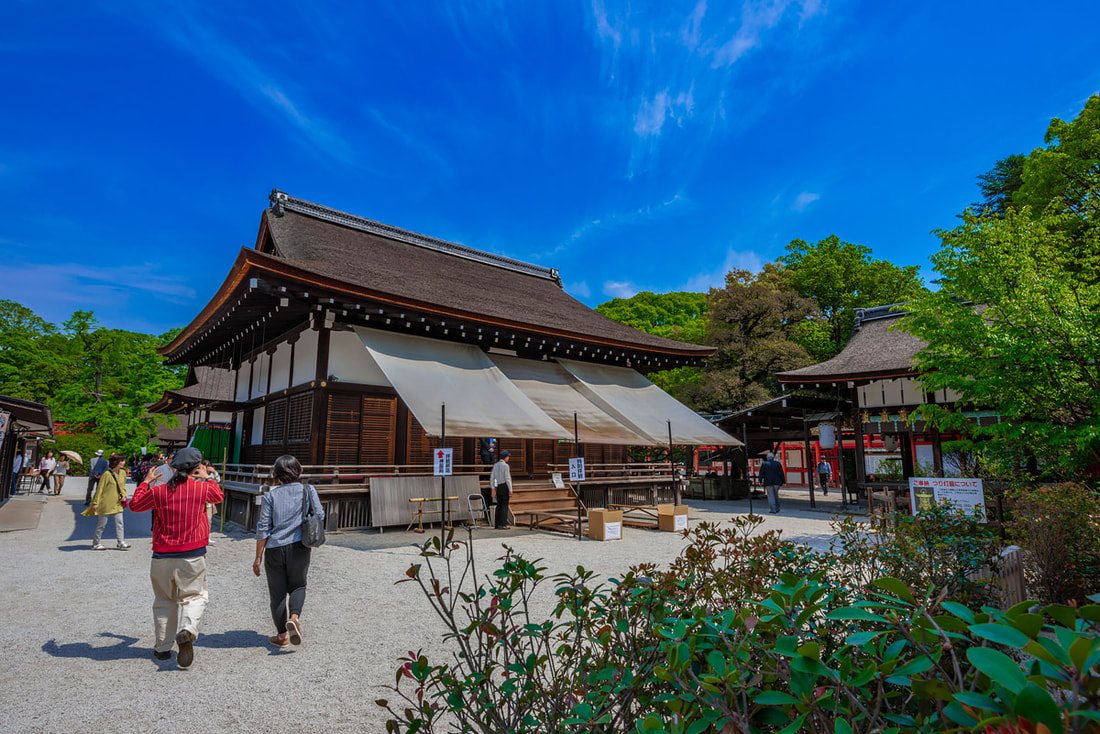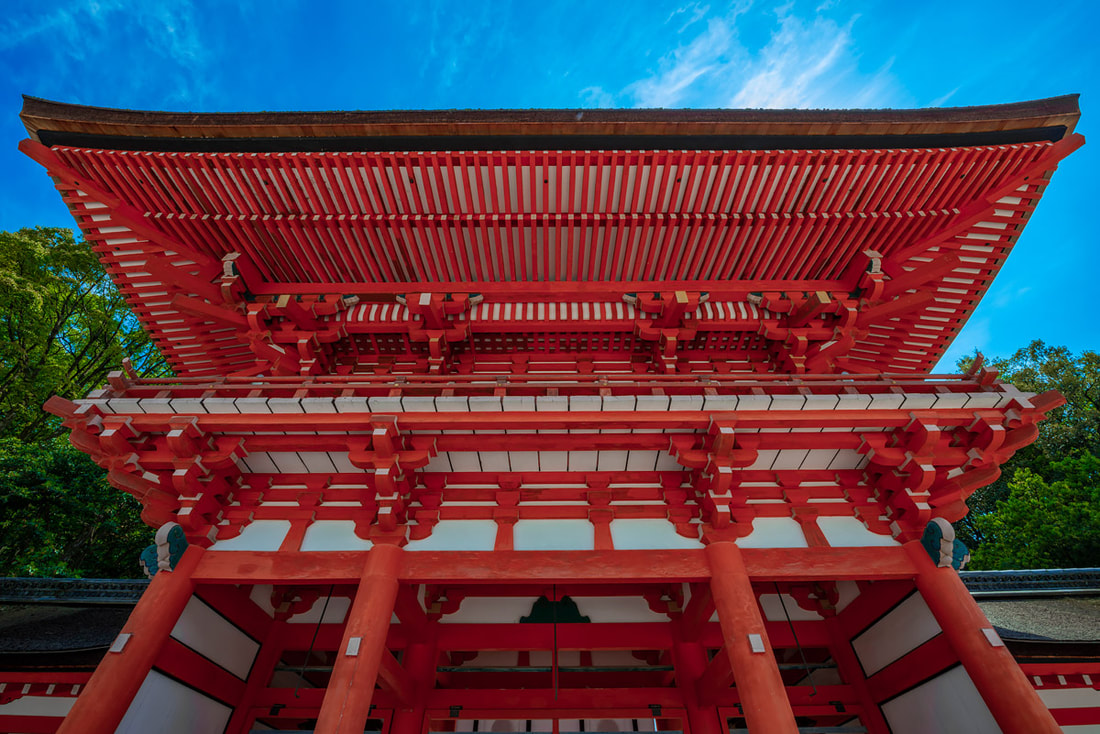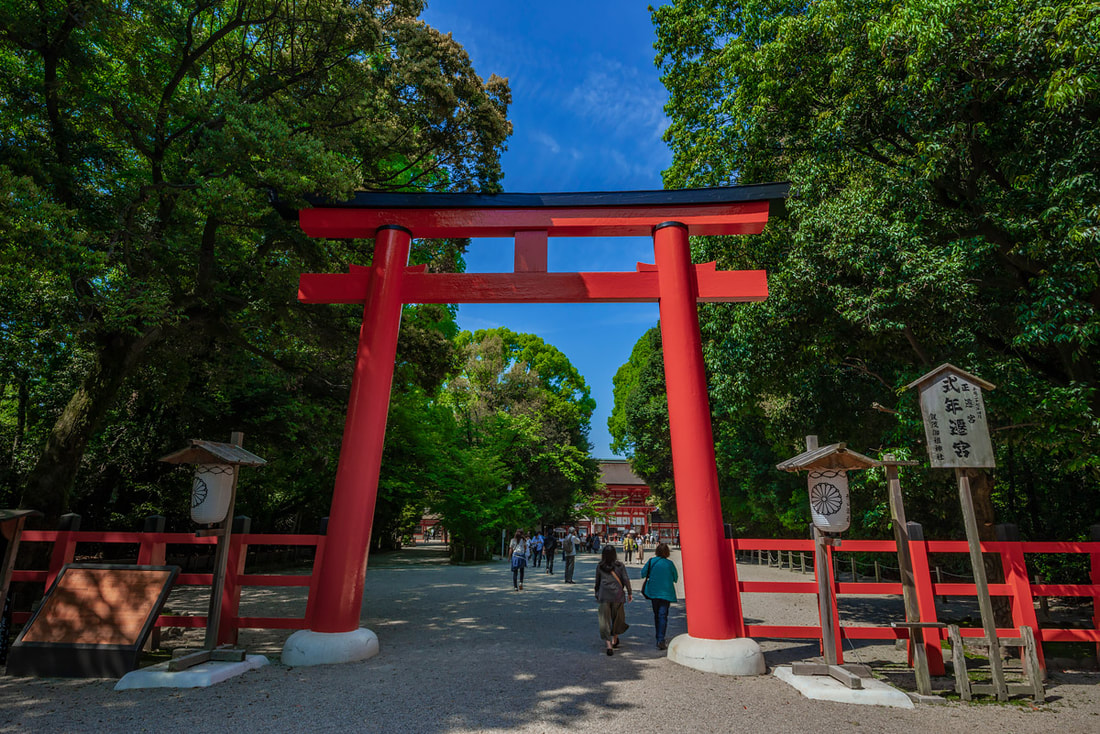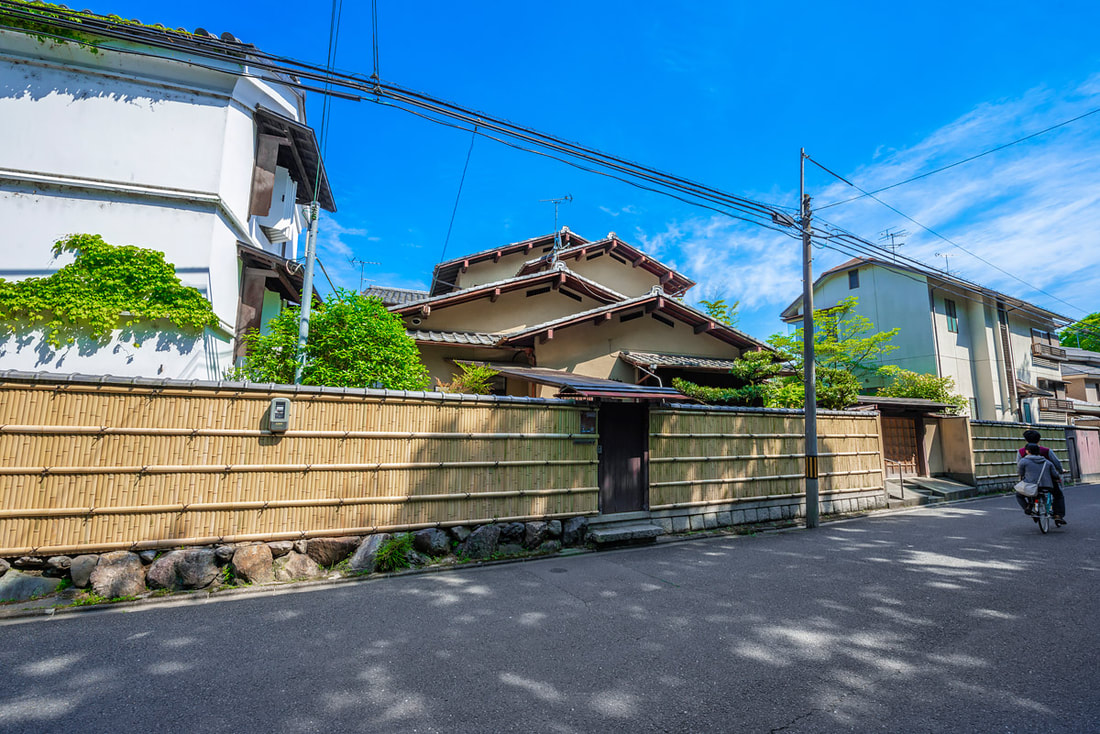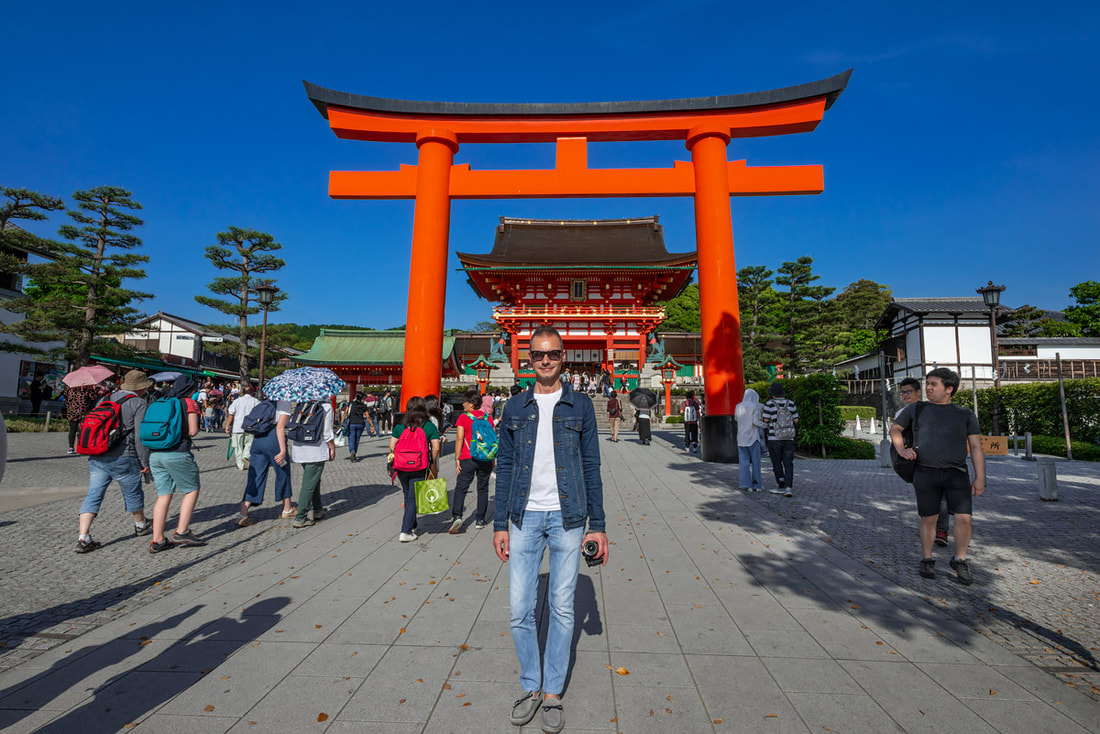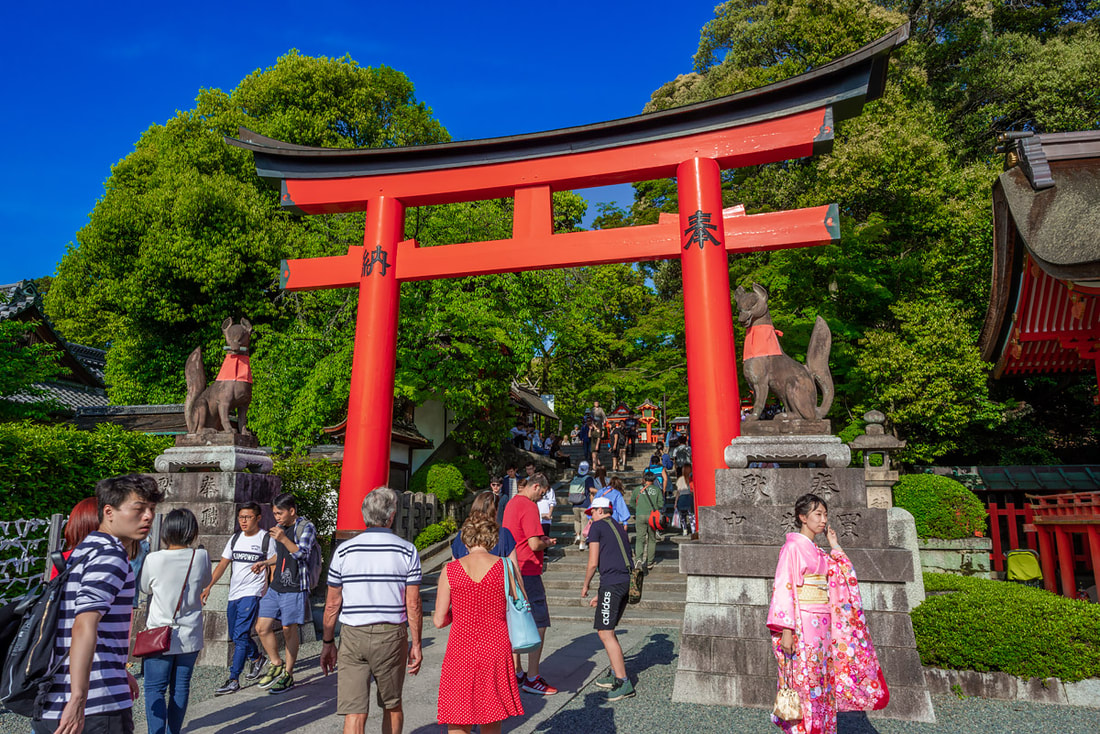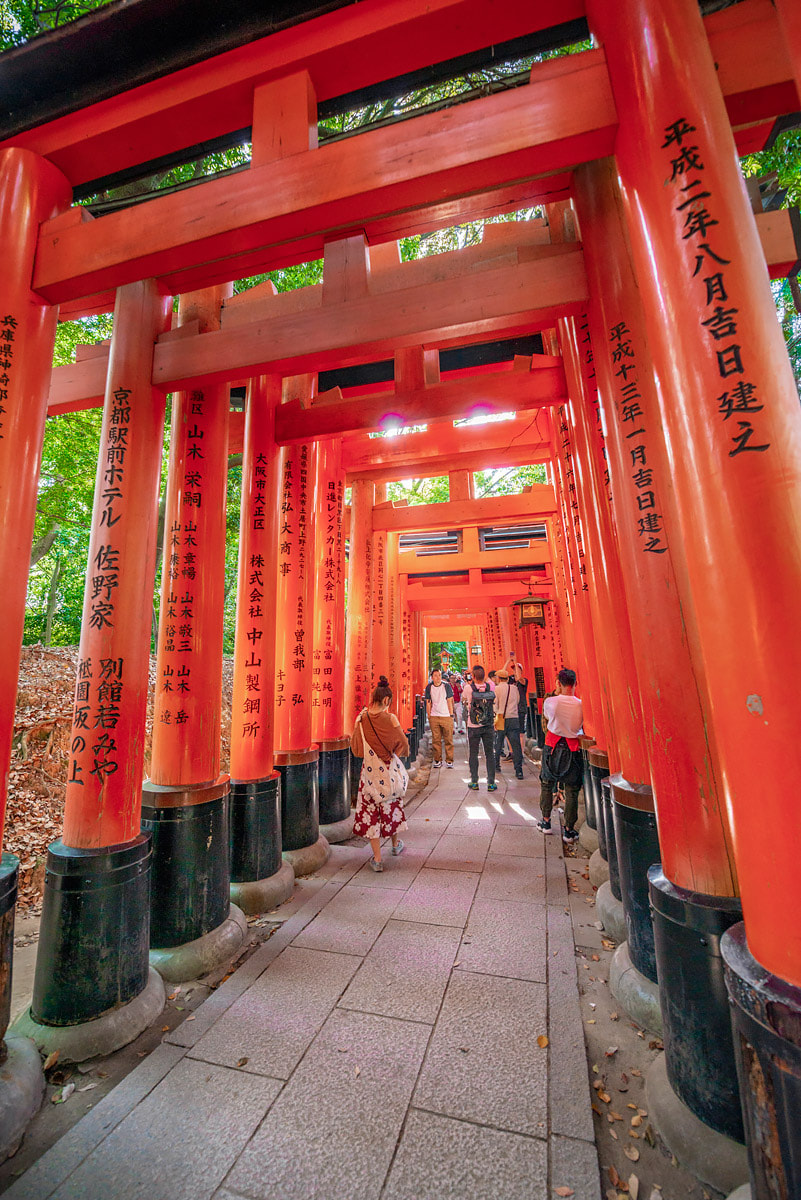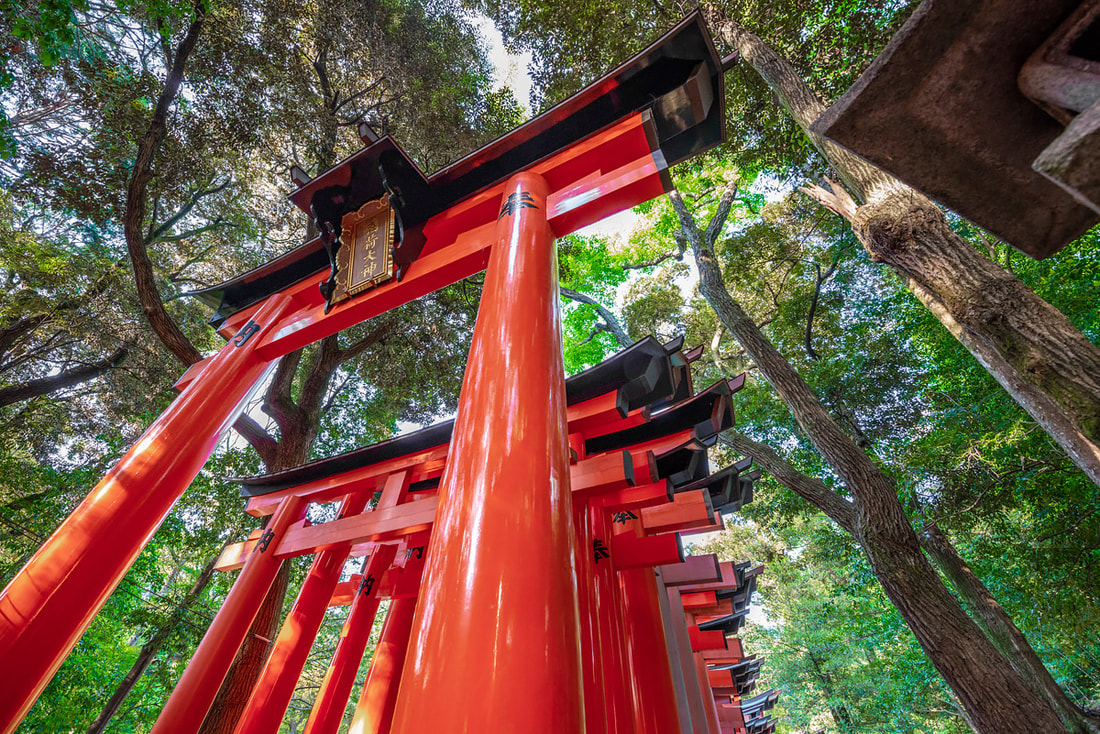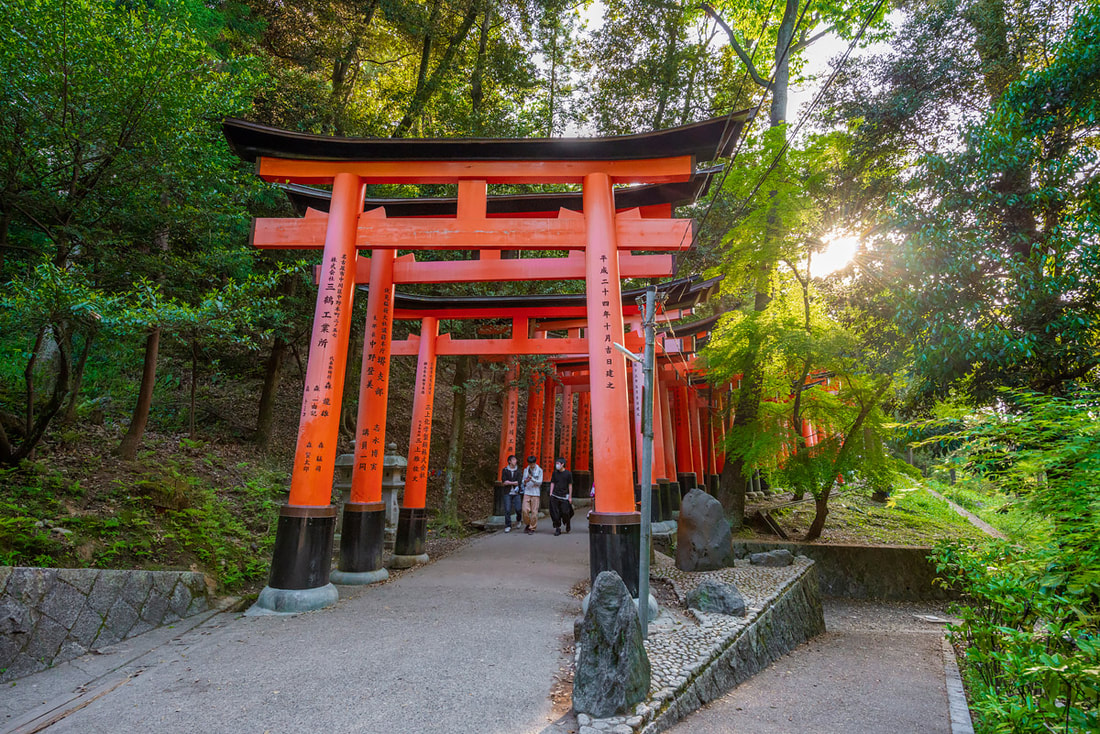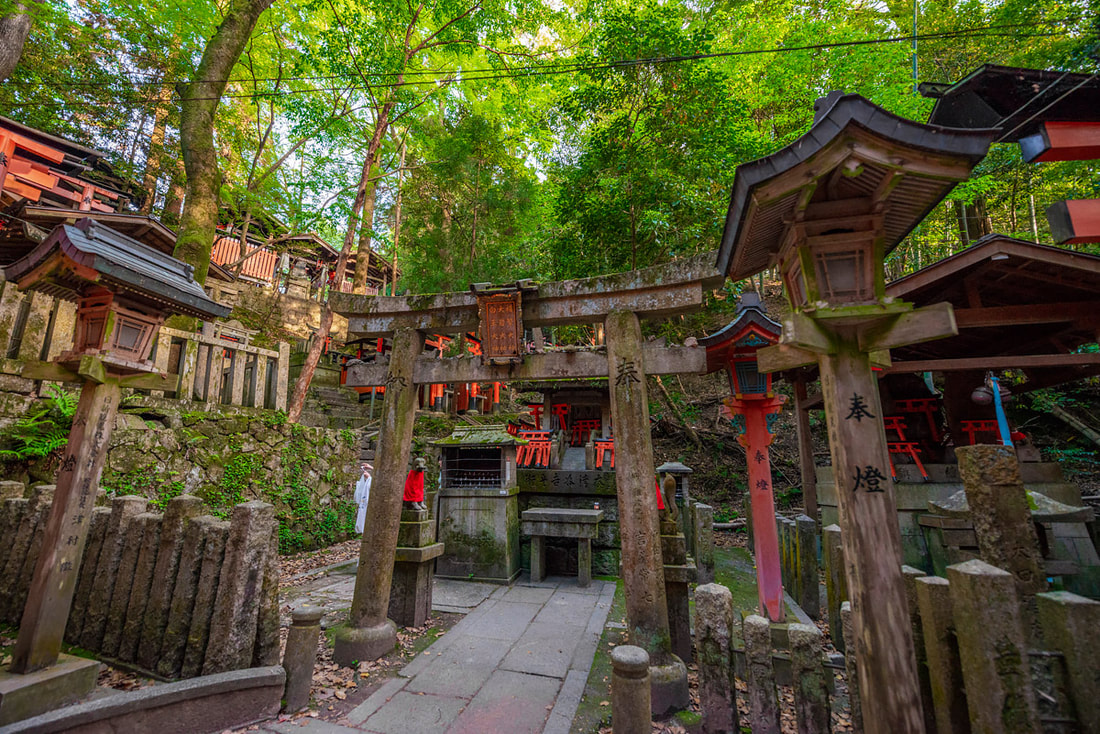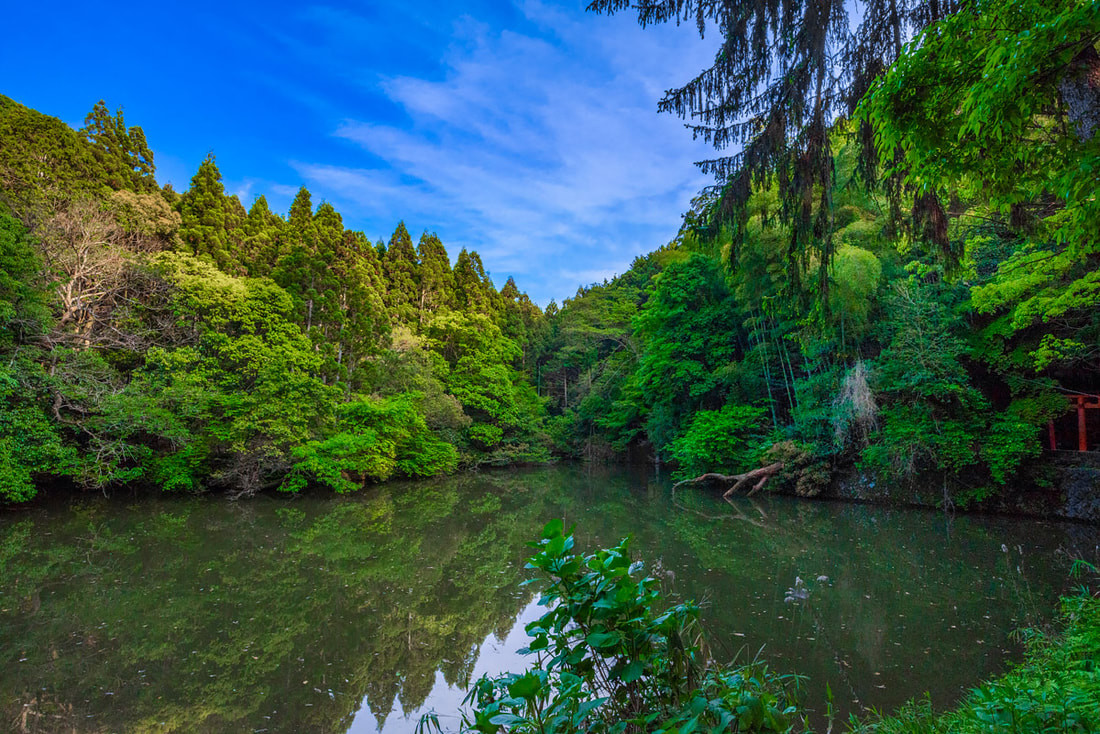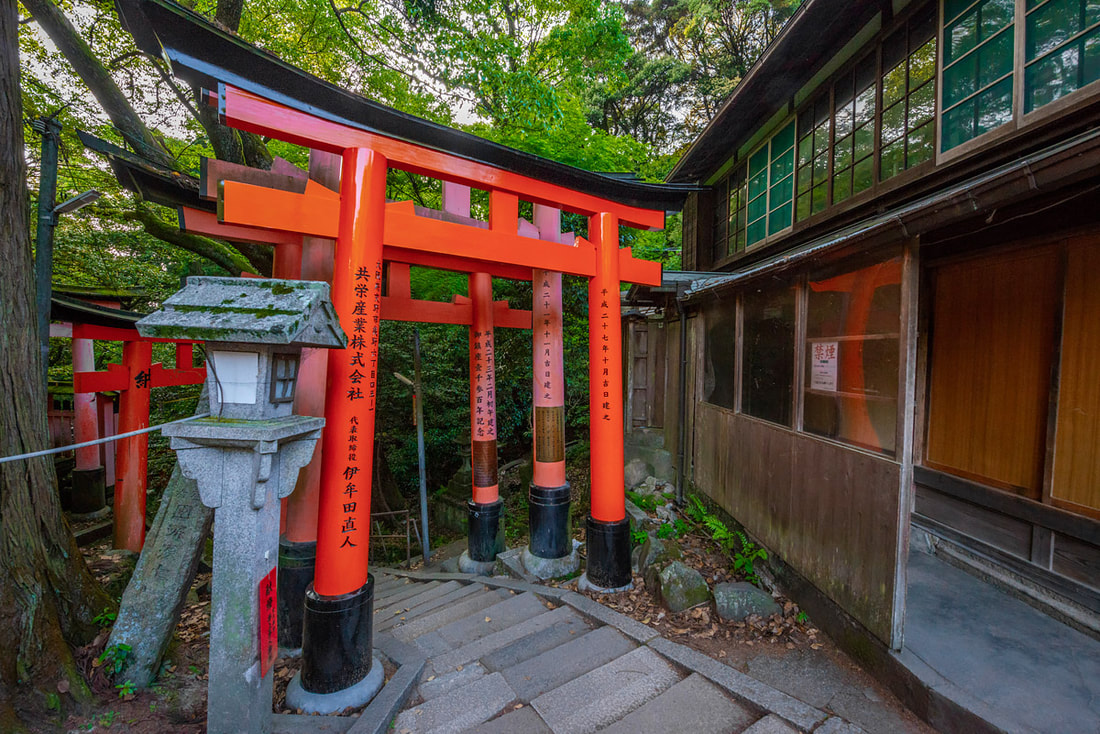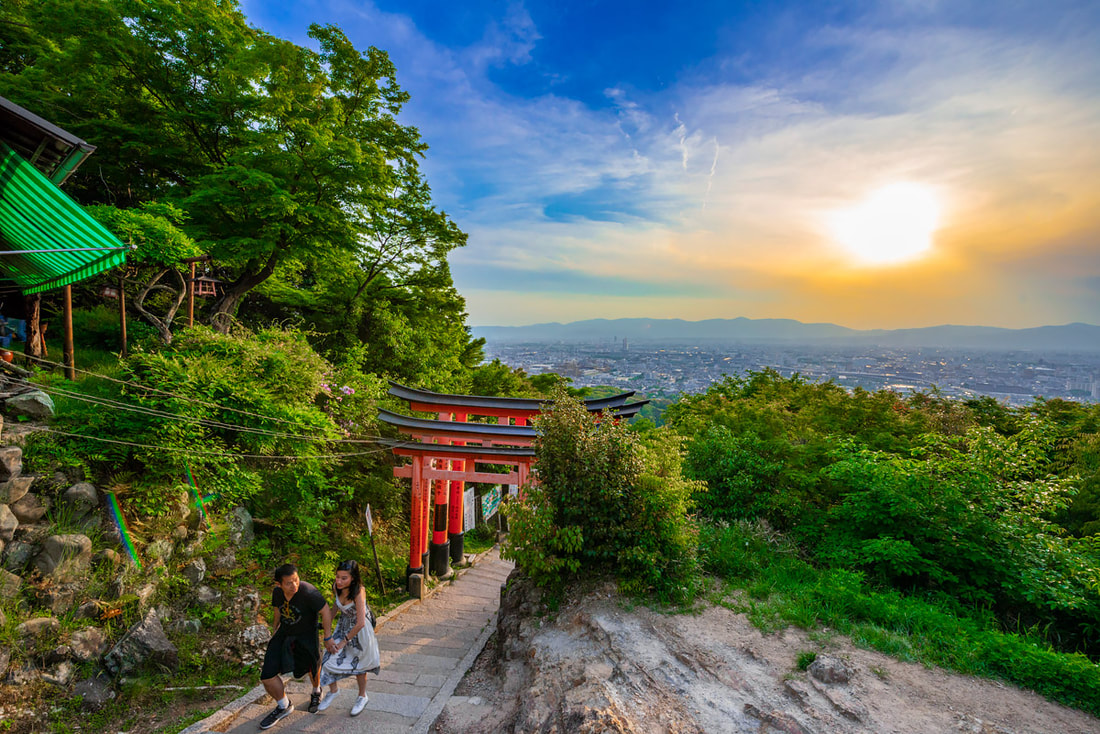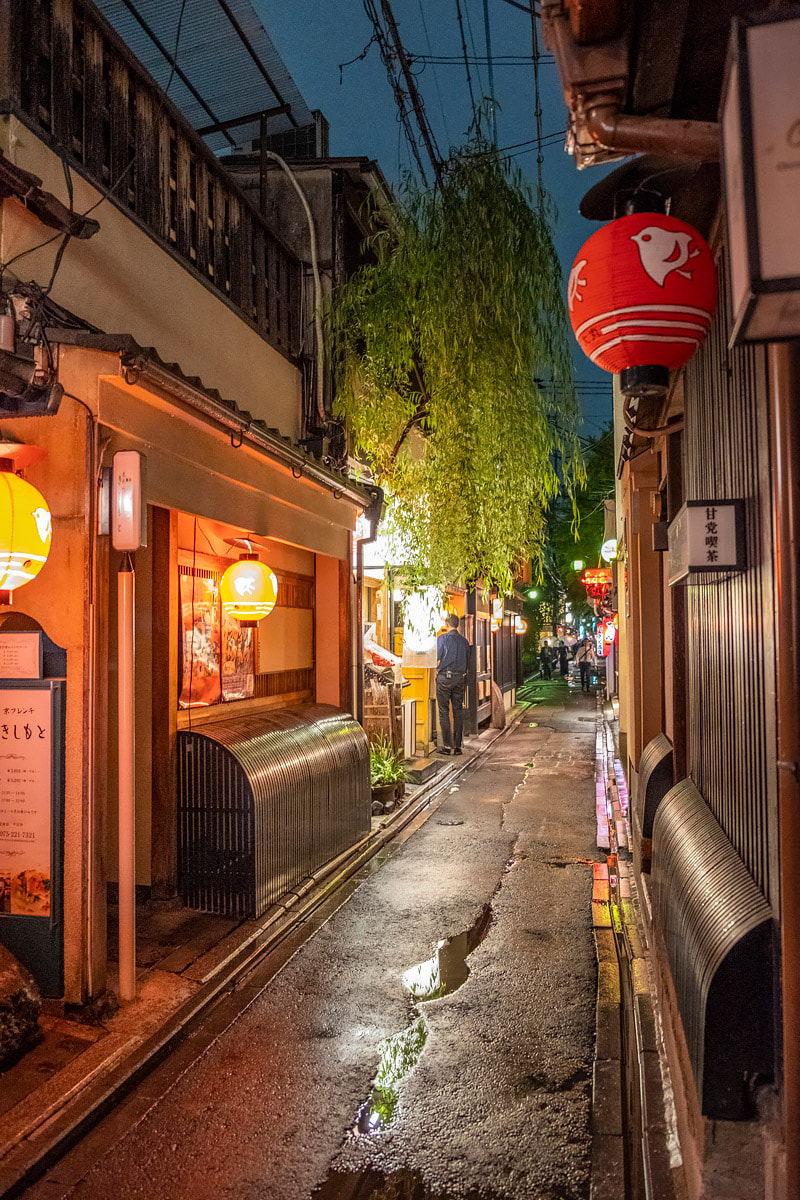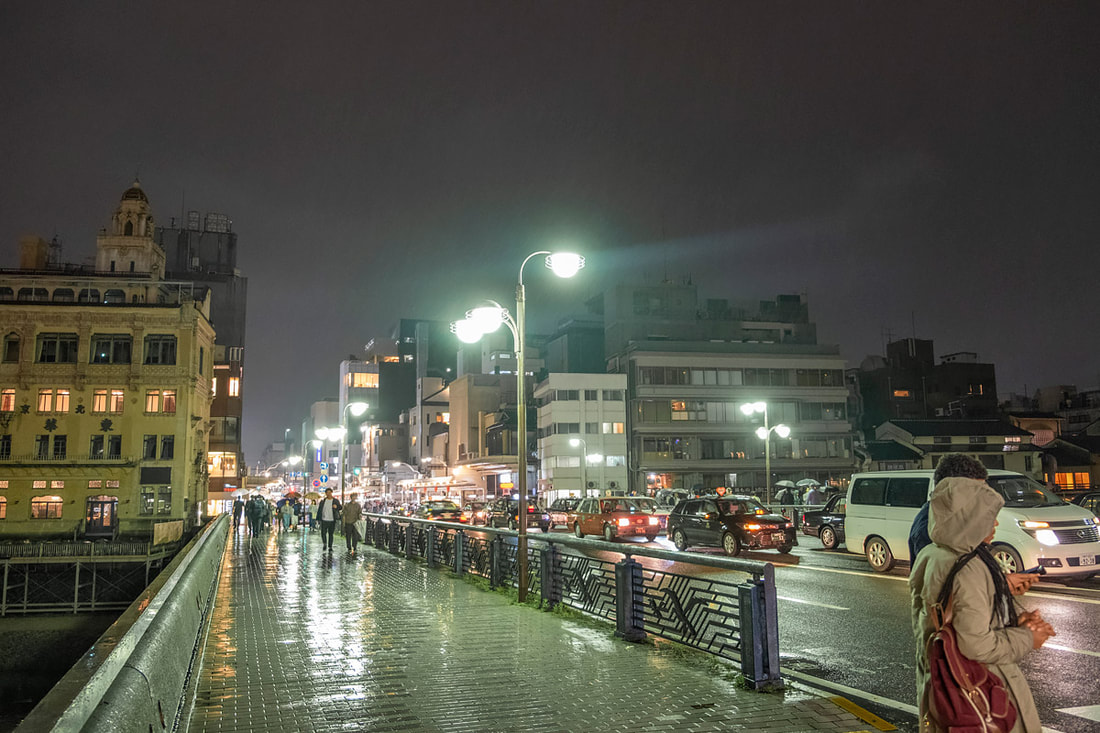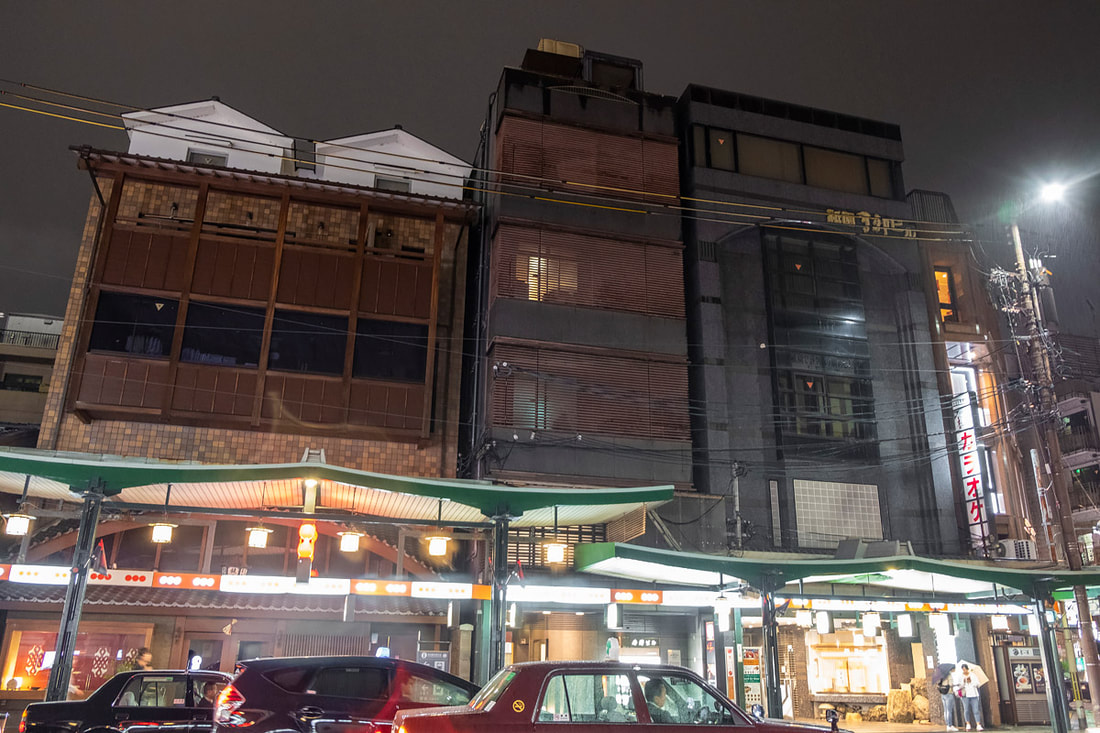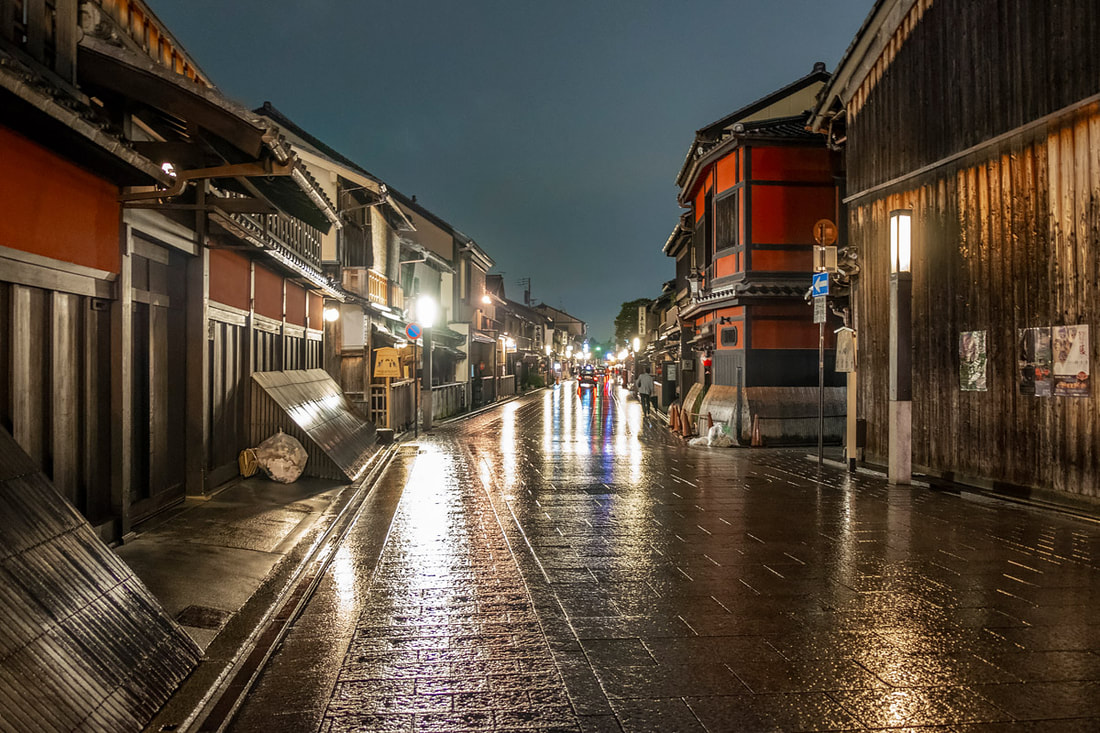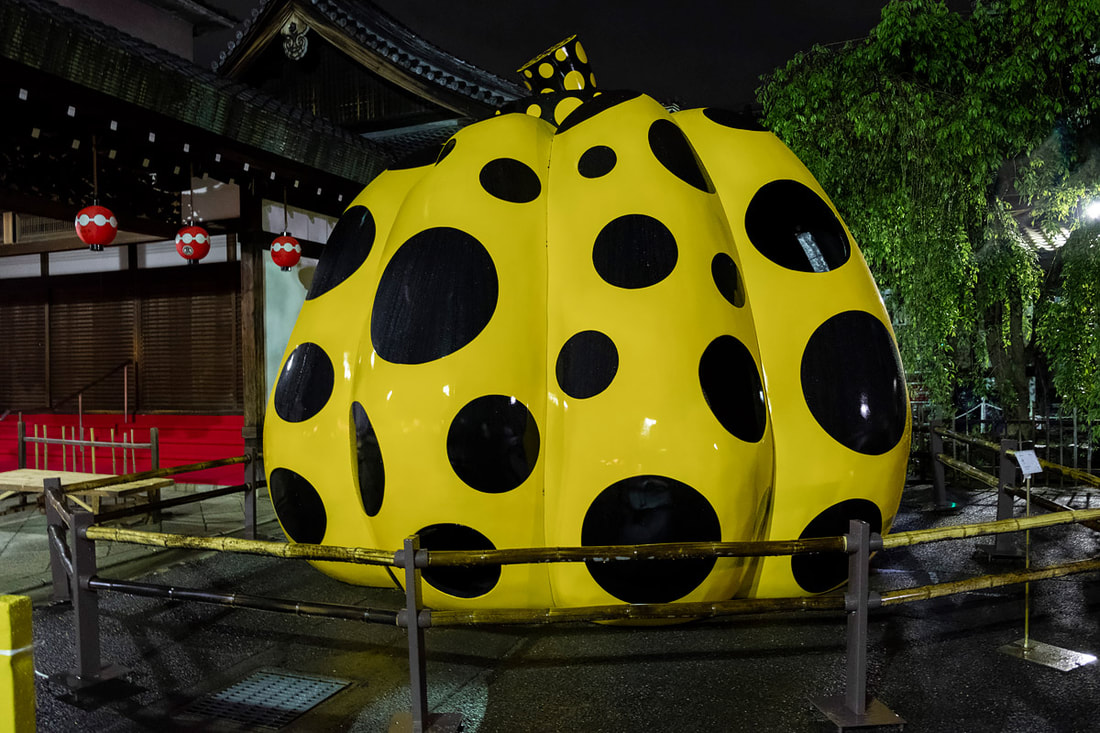By Antonio MalaraKyoto is the fifth post about my trip to Japan and it was the fourth city I visited during this trip made together with my sister in April 2018. The journey to Kyoto started from the beautiful Kanazawa station where we took a Shinkansen which got us to our destination in a couple of hours. Even if practical and fast, traveling aboard the super-fast Japanese trains didn't give the opportunity to enjoy the view, at the most it could be fun to see the houses outside the train windows disappear in a strange way. Kyoto as in part Kanazawa was important because a city where there were still pure Japanese works, temples and structures that had not been destroyed during the war. I had researched Kyoto very well especially from the point of view of the maps and the locations of the points of interest that we would visit. I had left the cultural part to my sister; I would take her to the places and she would explain their history to me. Of all the temples and sights in Kyoto, I was most fascinated by Fushimi Inari and the Arashiyma bamboo forest. I followed a photographer who often traveled to Japan and had written many interesting things about the forest, also many tips which I later found useful. In addition to this, Kyoto was important because we would have used it as a base to reach other important locations, also thanks to the use of the Shinkansen. Kyoto was therefore a very strategic destination and above all it was also a demanding destination where together with my sister we had to be fast and optimize the times to the maximum. CenterI remember a photo with "dark" tones that I had seen on one of the photography pages that I followed. It was Kyoto station but it looked like a futuristic place and not just for the type of photos. It was mainly the structure that was striking because it was in fact a modern skyscraper and in my European mind that place could not accommodate trains. Arriving in Kyoto right at that station had been a satisfaction that I enjoyed even before leaving Kanazawa. Upon arrival, what struck me the most was above all the height of the building in addition to the design. Already in Tokyo I had noticed that the stations of the most important cities were like shopping malls, modern places full of many activities that resembled micro-cities. Kyoto followed the same philosophy and at the exit of the station, in addition to the modern beauty of this mega structure all in glass, there was also the Kyoto Tower. This structure was a white concrete trellis, not very high, with two red platforms. A very similar work to the one that could be seen in the cartoon "The Jetsons" however the Kyoto Tower had a particularity: it stood out from the inside of a normal building. It was singular to see this tower emerging from within another structure with which it shared nothing in terms of design. Our hotel was two blocks from the station and that whole area was a small downtown, with glass buildings where there were practically multiple businesses; banks, restaurants, a shopping center and various markets. That area was our headquarters, where we ate breakfast, planned our days, rested or while away the time in the shopping center. Obviously this is what I consider the center of Kyoto from my point of view, this area that I described was still an important and central district. It was a quiet area even in the night and I regret not having given it the right attention mostly from a photographic point of view because it deserved. Nanzen-jiOur first exploration place in Kyoto was Nanzen-ji, this building was a Buddhist temple located in the hills east of the city. The temple dated back to 1291 and had been erected by Emperor Kameyama where previously stood his palace. The temple was very popular as a tourist attraction and after arriving at the nearest metro station, we had to walk a bit to reach it. This detail was important because it meant that the temple was away from the hustle and bustle of the city, a full-blown place of worship. The walk up to the front door was pleasant albeit slightly uphill; walking surrounded by very tall vegetation was always a pleasure especially for breathing. After the large wooden entrance door, the area looked like a large garden, a paved path surrounded by greenery led to a short staircase above which was the first part of the temple. The Nanzen-ji Sanmon Gate was a large wooden structure on two but very high levels. At the base were the columns that supported the structure but the ground floor was a sort of open gallery. Maybe because we visited it early in the morning but there wasn't much confusion that day and this gave us the freedom to enjoy the place by taking lots of photos without problems. The beauty of the temple was also emphasized by its location totally surrounded by greenery. Going beyond the ground floor where there were large doors, we found ourselves in a new part of the park. After a short walk we were in front of the main structure; a building similar to the previous one but with much more decorations and the doors already present abroad on the ground floor. The entrance was closed by wooden bars and the width of them gave the chance to see the inside of the temple. I could see a central altar full of decorative objects, on the ceiling there was a drawing of an animal that I could not figure out if it was a bird or some sort of dragon because from my view it remained upside down. The temple park was very large and walking we arrived in a very interesting area where there was the Suirokaku Water Bridge. It was a brick aqueduct, it formed a series of arches but it was not in good condition. Mostly the walls were a little eroded by humidity but there were parts where we could see the original red color. However, the structure was very large and therefore very impactful also because like everything in the park, it was surrounded by very tall trees. Following the paths we visited many small structures all separated from each other but my sister had read of a place that was dedicated to meditation and we started looking for it. The place in question was the Oku-No-In-Temple and thanks to the maps we discovered that it was located much higher up the mountain. We walked along another path to reach the temple of meditation and after a while we found ourselves in front of a very suggestive structure. Just behind a valley there was a small structure with the aesthetic characteristics of a temple, next to it there was a bridge that led to the other bank. Just a stone's throw away there was a waterfall and a structure next to it, as far as we understood a sacred place to meditate. The place was definitely atmospheric and being no one there but us made it even more beautiful. All around only the noise of nature and that of the water falling from the small waterfall, all if considered the spiritual value of the place, gave a feeling of positive energy. I liked places like that, where from a park, after a few steps, you find yourself catapulted into a new dimension; a journey through time. Nanzen-ji had been a singular experience, the first temple seen in Kyoto had given us a journey inside another journey, the world of Oz in the Japanese version. Tetsugaku No-MichiTetsugaku No Michi was a footpath that connected Nanzen-ji to another temple, Ginkaku-ji. My sister and I walked it in both directions but while she knew the ins and outs and was very excited to walk it, I learned about the place as I visited. My sister explained to me that the path was called the "Philosopher's Path" because it was thought that in the past a philosopher walked it every day and used it as a place of meditation. My sister spoke and I listened and observed along the way and in a very short time I discovered the magic of the place. The path along it in the direction of Ginkaku-ji, overlooked Kyoto from the left side. The view was more or less wide based on the cherry trees that lined the entire route. The trees weren't in bloom when we saw them and I remember my sister saying that the path was even more charming during cherry blossom, a version we didn't get to see. The path all along its course was as wide as narrow, and in some places was flanked by a stream. In those points there were many stone bridges that connected the part of the hill and they were very characteristic. When we walked it, the path wasn't very populated and when at one point I noticed some drinks vending machines, I had an original idea. After buying a bottle of water, I proposed to my sister that we stop at one of those benches and eat the onigiri we bought in the morning. It was a very original lunch, in a truly unique context and with the good luck of not having to share it with other people. The philosopher's path was a place that transmitted a certain spirituality, the natural parts blended perfectly with the few artificial things that were there and this increased the magic of the place. Although as I said before from the Tetsugaku No Michi there was a panoramic view of the city, the place itself attracted the attention even more than the various viewpoints. Our experience there peaked when a Japanese gentleman stopped us realizing we were Italian. He was simply curious about Italy and for him it was a pleasure and a privilege to be able to talk to Italians because he was interested in our culture. The Japanese people were extremely kind and that gentleman represented their essence. Going through the Tetsugaku No Michi was a discovery and a unique experience perhaps strengthened by the fact that I didn't know the place. In fact, many times a place that is beautiful in itself offers more emotions than a place we know but see for the first time. Ginkaku-jiGinkaku-ji was another important Buddhist temple and an important destination in Kyoto. The temple was built by Ashigaka Yoshimasa at the end of the 1400s and was initially conceived as a private residence to be transformed later into a Zen temple. The area was very large and included several structures in addition to the main one which was the Kannonden also known as the Silver Pavilion. The whole area was surrounded by immense gardens which complemented the beauty of the temples in a suggestive way. We arrived at Ginkaku-ji along the philosopher's path, so surrounded by a decidedly relaxing place, we entered another that respected the same rules. The entrance path was formed by a low stone wall with fences above it, after a few meters it took us right near the Kannonden however the path was forced and led to being face to face with the temple only at the end. Of the first structures we saw, what struck me the most was the "design" of the gardens around them. In fact there were drawings made entirely with sand and above all one was a small round pyramid, an original thing I had never seen before. Some glimpses with that sand that formed figures with the background of a very colorful and typical vegetation were truly suggestive. Even if we had to walk in single file, we could still enjoy the place because those spaces weren't meant to be walked on anyway. The path winded through ancient-looking trees, rocks, small bridges and a temple always popped out of the vegetation in the most surprisingly way. From some corners of the path, the Kannonden could be seen in the distance, which however was modest in size, at least when viewed from a distance. Literally slaloming against a backdrop of truly unique trees and plants, we took an uphill path that led to Tsukimachiyama Hill. There we had a nice surprise because going up we immersed ourselves in a small bamboo forest. I say small but for a while we were literally surrounded by very tall trees and there I had a preview of what it would be being inside the other bamboo forest, the more famous one. From the vantage point of the hill there was a very nice but not sensational view of the whole temple area. From there, we could have the perception of the size of the various pavilions and we could also see a small part of the city of Kyoto. Once back down, the route only took us to one side of the Kannonden, a slightly strange angled view, a bit in profile. I don't know if the paths inside change from time to time but certainly what we did that day didn't give the best view of the most famous temple. Our visit lasted about an hour, spent with a very different perception of time than normal. In fact, naturalistic and meditation contexts such as those had something magical that in fact did not allow the passage of time to be perceived in the traditional way. Kyoto and its temples were definitely out of time, in every sense. Arashiyama Bamboo ForestArashiyama Bamboo Forest was one of the destinations I eagerly awaited, I had seen hundreds of photos and the place inspired me greatly. The photographer I followed and who had often visited the place recommended going there early in the morning, he usually went there after dawn. This was because in those hours the forest was deserted and he could also take pictures with long exposures. Obviously we took the advice only partially however it came in handy because we were there at about 9 AM while personally it was the type of place I would visit before lunch. We arrived by train in Saga-Arashiyama station where there was an old steam locomotive outside as a monument. We walked towards the forest through a neighborhood that was full of skinny houses, I was very interested in this architecture because I'm building a house that has the same characteristics. Between one photo and another of the houses, we arrived at the forest, this was a naturalistic place with free access. Along the entrance path we could already see the first tall bamboo trees, but it still wasn't the part I liked, the one seen in the photos. Then finally the path took on the physiognomy I knew, the brown fences covered by dry branches and the tips of the trees that touched and almost covered the sky. Already at that time the number of people was considerable, however, especially in some stretches there was enough relaxation to take pictures in an undisturbed way. The more we walked inside the more the sky disappeared and we found ourselves totally bought by the bamboo trees. Together with my sister we managed to find a recess that had a nice fence as a background, there we stopped and we were able to take many pictures without being disturbed. In reality, to perceive the size of the trees and of the whole area itself, it was important to always have people in the background as a reference. So we either spent the time taking pictures of ourselves or I was photographing myself trying to capture the people in the background so you could feel the depth and grandeur. Walking in that singular place was a beautiful experience but I don't know why I had imagined it differently, that place in the photos I had seen did not give the idea of its reality. I don't believe it was just for the people present there but the Arashiyama Bamboo forest, looking at it in photos, gave the impression of a flat place while live it gave a unique three-dimensional experience. Walking through the forest it was possible to perceived the depth and also the height, all thanks to the shape of the trees. The forest exit was close to another station, the Terokko Arashiyama, however we preferred to walk back to the previous one by walking through the neighborhood. At the station we stopped to take more pictures of the locomotive where we discovered another artistic structure. These were huge train wheels that formed a sort of giant V. The long-awaited visit to the Arashiyama Bamboo forest had been very interesting but for different reasons than I expected, proof that places must always be seen in person before idealizing them in a certain way. Kinkaku-jiBuilt in the late 1300s to be the villa of military commander Ashikaga Yoshimitsu, Kinkaku-ji had become another Buddhist temple that housed the relics of Rokuon-jl inside the pagoda. The temple also called Golden Pavillion was a three-story structure covered with gold leaf on the top two levels. My sister and I arrived at Kinkaku-ji by taxi after visiting the Arashiyama Bamboo Forest. A long path led to the entrance door of the whole area, it was completely made of wood and beyond it we could see thick vegetation. Immediately after the entrance there was a giant tree and around it several pavilions always built in wood. After less than five minutes of walking we arrived on a panoramic point that overlooked a small lake where the Golden Pavillion stood on the other side. Kinkaku-ji was beautiful, the base was dark brown and the facades of the first and second floors all very light gold. The lake in front of it and all the greenery behind it made a perfect frame. In the photos I took, the vegetation on this side of the river also appeared and was inserted into the frame, truly creating a sort of painting. The Golden Pavillion was the undisputed leader of that place, more than a work of architecture it seemed a work of nature! After the various photos taken from that perspective, we took the path that bordered the lake to see the temple up close. But as we got closer the perspectives changed but they were always beautiful and original. We arrived on the side of the kinkaku-ji and we were so close that it gave the impression of being able to touch it, like in front of a house but outside its fence. The route went all around the temple always giving new perspectives. At one point, turning around we arrived right on the opposite side of the view we had at the beginning. From there we could see some very interesting details of the Golden Pavilion such as a sort of gazebo made on the water and the islet in front of it, very small but full of trees. The temple had at least three totally different perspectives which were one more beautiful than the other, contrary to what happened at Ginkaku where we could not get a decent view of the temple. For the rest in the whole area there were no other important structures but a lot of vegetation which was still beautiful. The visit to Kinkaku-ji lasted about forty minutes and was very impressive in its simplicity. As I said before, the temple did not look like an artificial element built into nature, but rather it seemed that it was born out of nature. Kinkaku-ji looked like a natural element, as if it were the queen plant of a fantastic kingdom and all the vegetation around it as subjects at its service. A dream experience or to put it better, a fairytale place. Shimogamo-Jinja ShrineUntil then we had only visited Buddhist temples in Kyoto. The visit to the Shimogamo-Jinja Shrine therefore represented the first Shinto monument that we went to see in the city of Kyoto. Shimogamo was the most important and oldest Shinto temple and was a UNESCO heritage site, I personally didn't know it but it was a destination that my sister had scrupulously put on the list. We arrived at the temple by public transport, however we had to walk a long way to the entrance. I remember that walk with great pleasure because it was an opportunity to see a residential area that we otherwise would not have visited. Furthermore, the Shimogamo area was developed in length from north to south so, after the visit, I had planned to take a transport back to another part of the city, a useful detail that would have led us to explore a new district. The entrance to the Shimogamo was represented by a modest red Torii, a type of structure that I had first seen live in Tokyo and had grown to love. The short dirt road after the front door led directly to the main area of the whole complex. The Shimogamo area resembled a Far West town but in a Shinto version, with temples instead of houses. At the center of what looked like a square was a pavilion called the "Dance Stage" and all around other pavilions including the main one, all red which also developed in width with a very large portico. Basically we spent most of the time taking pictures in front of the main pavilion and then we crossed it. As I said, the park developed in length and we arrived up to another entrance door which saw another red Torii but bigger than the first one we had seen. After a short stop there, we continued our visit through the gardens along a beautiful tree-lined avenue until we reached another exit. The visit to the Shimogamo was very short compared to the others, however that dirt place, full of pavilions, has always remained imprinted in my mind. That was one of the places that made me feel like I've been there before, not seen it for the first time. Short but intense visit, one of those that remain inside. Even the view of the southern side neighborhood was interesting especially when in the middle of the road and between the houses, we came across another red Torii, probably the most original thing seen because it was out of context. Original idea that of course I really appreciated. Fushimi Inari-TaishaFushimi Inari-Taisha was the main Shinto shrine dedicated to Inari, the god of rice and therefore of commerce also seen as prosperity. The sanctuary developed on a hill also dedicated to Inari and was a long uphill path made up of thousands of Torii that marked the way. The main structure of the sanctuary dates back to the fifteenth century but inside there were also other much older structures. Scattered here and there, there were also many statues of foxes which were objects of veneration and had the key in their mouth which was the one that kept the rice. Even if I'm ashamed to admit it, I had known the place thanks to social media when they still served as a source of inspiration. That series of Torii lined up was not only manic work but above all it was fascinating. A path dictated by an infinite series of sacred structures that had a harmonious shape that I really liked. Fushimi Inari was the last sacred place we visited in Kyoto and I was very excited and happy to see it because it was probably one of the things about Japan that intrigued me the most. We got off at Fushimi Inari station and after crossing the tracks we took a very crowded street full of shops where a big red Torii stood out. The road led to the entrance door from the side, in fact to appreciate the large entrance sanctuary we had to go back a bit. The square was very large, full of people and vivid red given by another Torii and the shrine pavilion. We spent a lot of time there taking pictures because there were multiple perspectives and then we walked through the pavilion. The area was large but the buildings were not complex, in fact the oratory pavilion was in the center and the Main Shrine behind it. This one stood above a short flight of steps, was modest in size and compared to the others had a roof that formed a curve in the center. After seeing it up close we walked along the path formed by the Torii. I must say that right from the start I immediately perceived the effect of this path which looked like a red corridor. Probably the structure that was closest to the ones seen in the photos, I mean that part was exactly how I imagined it after seeing it in the pictures. The walk along the Torii, although represented by these uniform symbols, was not monotonous. There were wider parts, some narrower ones and even the Torii didn't always respect the same distance. In some places, the structures merged with the surrounding vegetation in a singular way. In fact they gave the effect of magic, like a wizard who had thrown those Torii which then had scattered caressing the mountain rather than gutting it. The ascent was long mostly because we stopped at every corner to take different photos and for this reason we perceived the journey as something infinite. Going up we stopped in a small temple built almost entirely in stone where, however, there were also other Torii like those along the path, a very original place that reminded me a bit of Nanzen-ji in terms of atmosphere. Right there, there was also a small lake named Shin-ike Pond, from my perspective looked triangular and it had all the trees that went on the water. Our journey was interrupted when we arrived at Fushimi Inari Yotsuji, a panoramic place that also served as a refreshment area and from where we could continue by taking different routes. We decided to stop there because my sister was a little tired and in any case the journey was still long until we reached the top. However that area was enough to feel the vastness and there was also a beautiful view of Kyoto. Personally I was satisfied with the visit and taking into account that it would take some time to go back, I did not regret not going further. The experience made at Fushimi Inari-Trisha was very beautiful and interesting, the place was not different from what I imagined and at the same time it gave me surprises that I didn't expect. It reminded me a bit of the climb I made to reach the Petra monastery but I must say that nothing to date has reached the beauty and magic I experienced in Jordan. Even if I find myself in oriental philosophy as calm and meditation, there is something arid and wild like the desert that is part of my DNA, for this reason nothing can surpass the arid yellow of a boundless and lifeless land. GionJapan was also famous for some particular dishes and wagyū beef was one of them. We had already eaten hamburgers in Tokyo and left the wagyū-based dinner experience as the last thing to do in Kyoto. My sister did some research and discovered an area near Gion that was full of restaurants so we decided to go there. For the occasion we would also have visited the neighborhood which was famous because in the past it was the place frequented by geishas. Actually my sister had read that it was still possible to see some of them but there were no confirmations about it. The final Kyoto program therefore included a dinner based on the best meat and the exploration of an unconventional neighborhood. We arrived at Gion Station and headed up the east side of the Kamo River. It was the Saitocho area, there we walked through the streets that were very narrow. I had never seen anything like that even in certain remote villages that we have in many parts of Italy. Those streets were very attractive because they were full of restaurants with lanterns hung outside that emitted red or yellow lights and were amplified by the reduced space. Dinner was delicious including the practice of roasting fresh meat on the hot plates they brought along with the food. After we finished and explored the neighborhood a bit more we crossed the Shijo Birdge and walked along the main road. This street was original because the sidewalk was covered with arcades, I don't know if it was a typical design or an exception. After a while we moved off the main road and discovered a parallel road which was beautiful. The road was paved in smooth stone and the buildings all in wood where some of them had an older and more fascinating architecture. It was definitely a film atmosphere helped by the light rain that had wet the road. That road had particularly fascinated me that I dedicated numerous photos to it. Our aimless exploration brought us in front of something that gave my sister a particular enthusiasm. In fact, out of nowhere we found ourselves in front of the statue of a giant yellow and black pumpkin. My sister told me it was a work by a Japanese artist called Yayoi Kusama. We took photos where especially my sister had a particular euphoria thanks to the confirmation of her culture which had manifested under the shape of a the giant pumpkin of which she knew the author. Gion was a very pleasant visit full of surprises, I hadn't imagined anything of what I saw and I also have to thank my sister because that night she insisted that I bring my camera which proved to be essential. However that night had only a negative side as we couldn't find a very popular place in Gion. In fact, on that area there was the Hokan-ji Pagoda, which represented a lot of Kyoto especially on social networks. That evening we didn't remember the correct name and I couldn't find it, I only found out later that it wasn't far from the pumpkin statue. This oversight will certainly be an incentive to return to a magical place like Kyoto. Kyoto was a relaxing experience even in the frenzy that led us to tour the city from one place to another without stopping. The city was also the base for visiting Nara, Osaka and finally Himeji. Definitely a different place than Tokyo, with a different but at the same time interesting soul. Kyoto can be safely used as the main destination for visiting Japan because it has a more strategic location than Tokyo. In addition to this, it certainly has a more traditional soul thanks to the wonder of its temples. Even though I loved Tokyo, Kyoto is probably the city I would like to see first if I were to return to Japan; more nature, more history without neglecting modernity. Pictures: Antonio Malara
Camera: Nikon D800-Fujifilm XT-20 (Gion)
0 Comments
Leave a Reply. |
